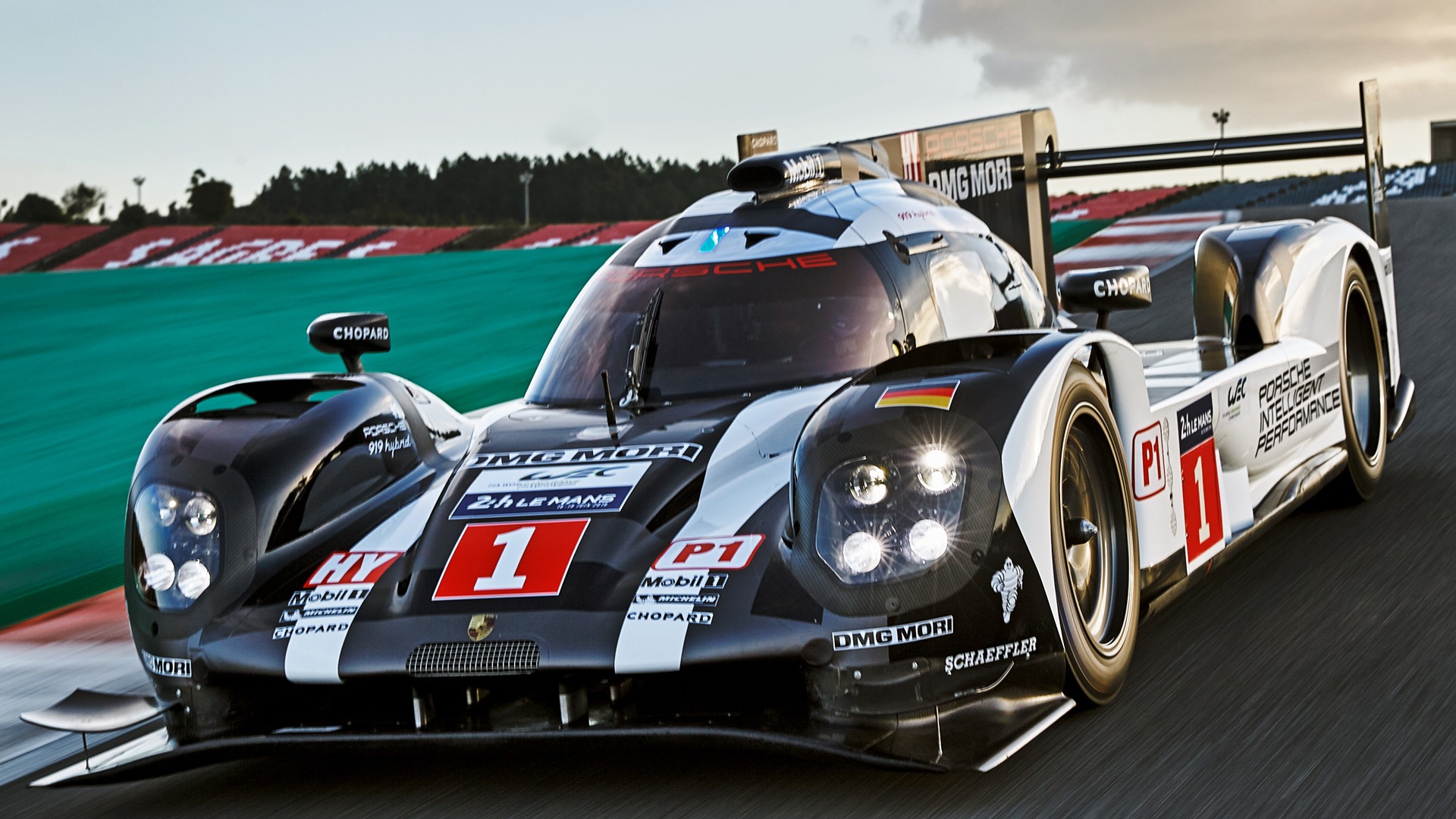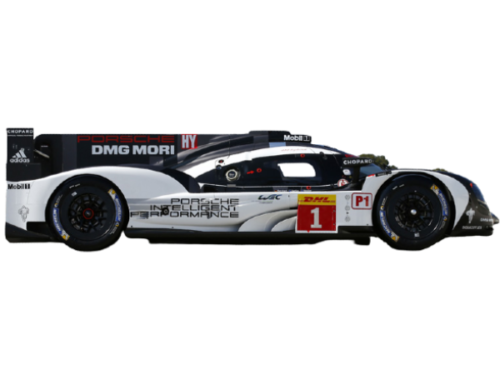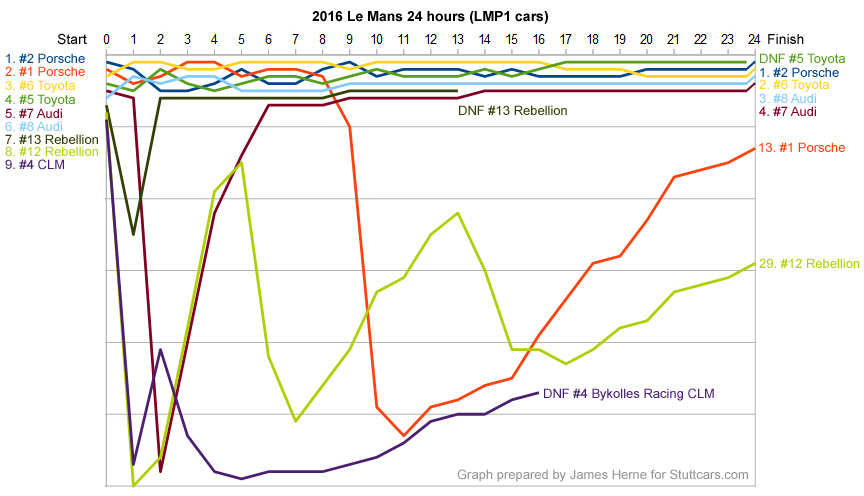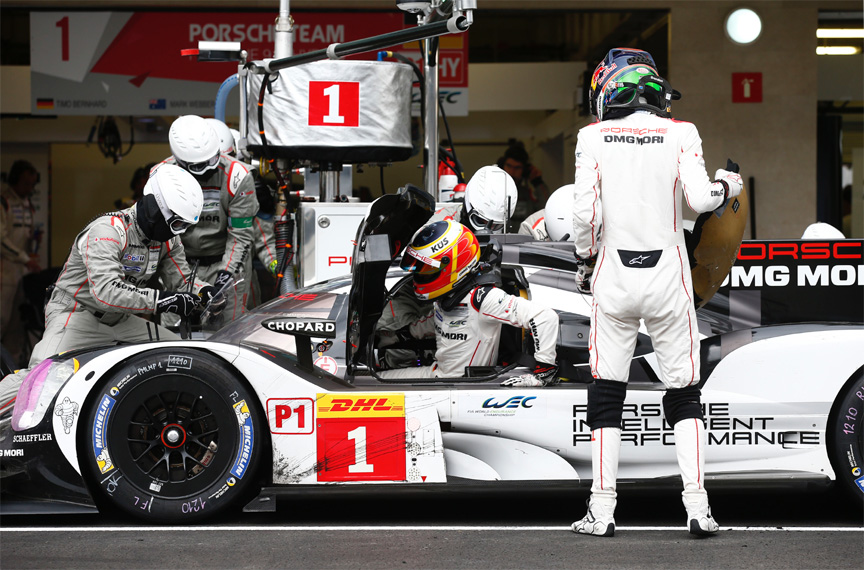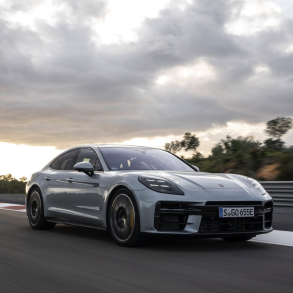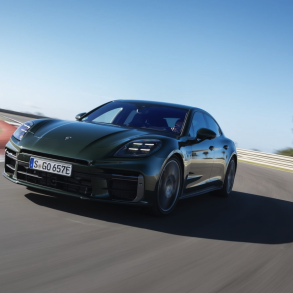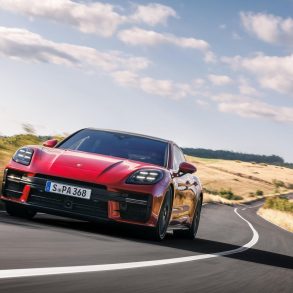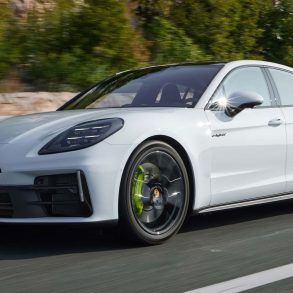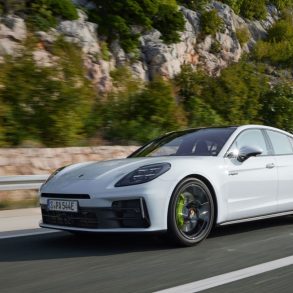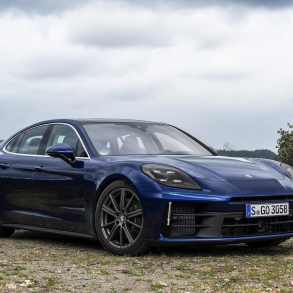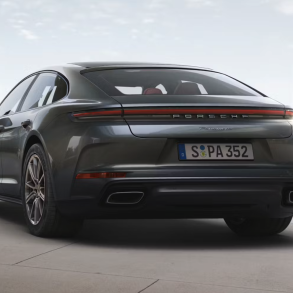2016 Porsche 919 Hybrid (9R9-2016)
Premiere: March 25, 2016 Circuit Paul Ricard, France / Achievements: 2016 Le Mans 24h winner, 2016 FIA World Endurance Manufacturers’ Championship winner, 2016 FIA World Endurance Drivers’ Championship winner
The third-generation 919 Hybrid (2016 MY) is powered by a turbocharged four-cylinder, two-litre petrol engine delivering almost 500 hp that drives the rear axle. The V4 engine, which is fully load-bearing, is turbocharged and features 4-valves per cylinder, DOHC, a Garrett turbocharger, direct fuel injection and an aluminium cylinder crankcase. In addition, the electric motor delivering more than 400 hp to the front axle. The latter is fed by two energy recovery systems.
The 2016 919 Hybrid Basics
- Internal combustion engine: 2.0V4 turbo, *360 kW/490 PS (officially “~8% less fuel and power” compared to the 2015 version)
- Electric motor: *309 kW/420 PS (officially “well over 400 hp”)
- Peak system power: *669 kW/910 PS (officially “around 900 hp”)
- Fuel tank: 62.5 L (68.5 L in 2015)
- Dimensions: 4650x1900x1050 mm
- Weight without fuel: 875 kg / 1929 lb (870 kg in 2015)
* estimation by Stuttcars.com, no official data available
The 2016 FIA regulations reduced the fuel flow for all the prototypes and for Porsche this resulted in a loss of 8% of fuel which meant the output of the internal combustion engine dropped below 500 hp.
In 2016, the WEC ran for the first time on the new Mexico City F1 circuit. This increased the calendar to 9 races in 9 countries. With the exception of Le Mans, the races were 6 hours long and the field was 32 cars divided into 4 classes.
Allowed fuel consumption versus used electric energy – 2016 values for Le Mans
| Electric energy used per lap | Petrol flow limited to | Diesel flow limited to |
|---|---|---|
| 2 MJ 4 MJ 6 MJ 8 MJ |
4.70 L/lap (5.07 in 2015) 4.54 L/lap (4.94 in 2015) 4.38 L/lap (4.81 in 2015) 4.31 L/lap (4.76 in 2015) |
3.70 L/lap (3.94 in 2015) 3.58 L/lap (3.84 in 2015) 3.47 L/lap (3.74 in 2015) 3.33 L/lap (3.65 in 2015) |
The first decisions for the 2016-spec Porsche 919 Hybrid were made in the spring of 2015, when the most important parameters for the suspension were set. The new front axle in the 919-16 allowed for more set-up options. And for the first time, Porsche fully exploited the WEC regulations by deploying 3 different aerodynamic packages to make the car best suit to the respective race tracks. The weight of the 4-cylinder turbo engine and the transmission were reduced.
Like the 919-14 and the 919-15, the 2016 version also had two energy recovery systems (KERS on front axle and AER running on exhaust gases). The braking energy contributed for 60%, with 40% coming from exhaust gas pressure. Both energy recovery systems were improved in terms of efficiency. Optimized were the electric motor at the front axle and the power electronics. The in-house developed battery got the new generation lithium-ion cells. While Porsche had used lithium-ion batteries for energy storage from the beginning, from 2016 Audi and Toyota also followed Porsche in this (earlier Audi had used flywheel storage and Toyota ultracaps, the electrochemical supercapacitors).
Using a 60% scale model, Porsche tested in the wind tunnel of the Williams Formula 1 team in Grove, England. To correlate the model tests to the test results on the racetrack, Porsche’s 1:1 wind tunnel in Weissach made an important contribution. Wind tunnel tests were strictly defined by FIA, they were monitored and limited to 1200 hours in 2016 and to 800 hours in 2017.
New Steering Wheel
The screen on the steering wheel shows speed, selected gear, selected motor management and the charge status of the lithium ion battery. The red button at the top left is the electrical boost button. The boost buttons are doubled – the uppermost paddles behind the steering wheel on the left and right do the same. The blue button at the top right is the headlight flasher, used by the fast prototypes to warn the slower vehicles before they are lapped. When pushed once, it causes the headlights to flash 3 times. As the steering wheel hosts a few new buttons: Sail, FCT (full course yellow) and others, some buttons had to be moved from the steering to the dashboard, for example windscreen wash, wiper interval and gearbox neutral.

2016 WEC prologue at Circuit Paul Ricard, March 25-26
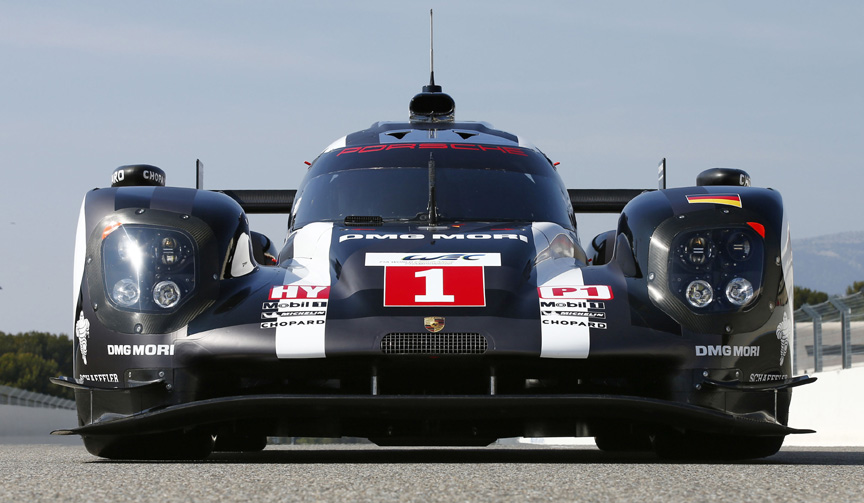
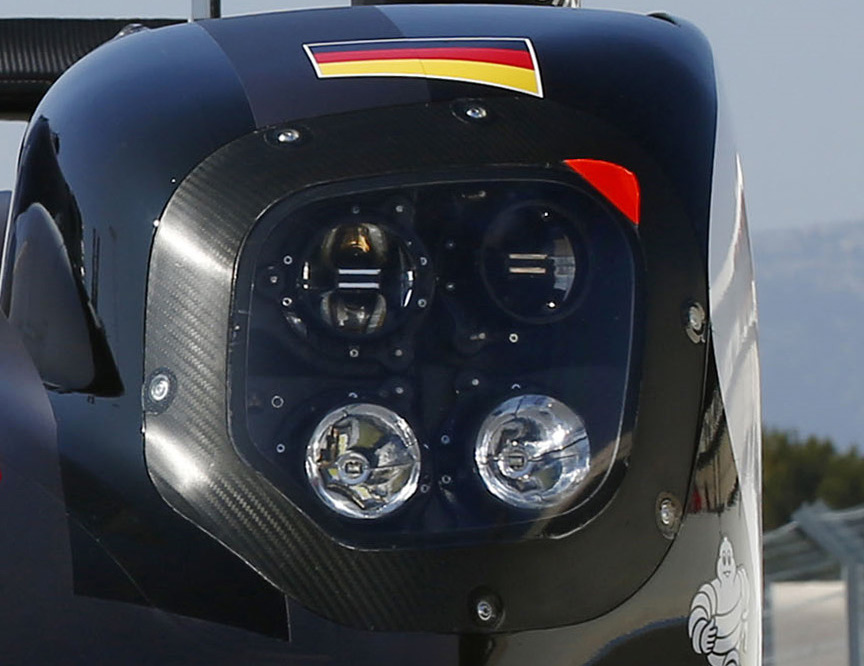
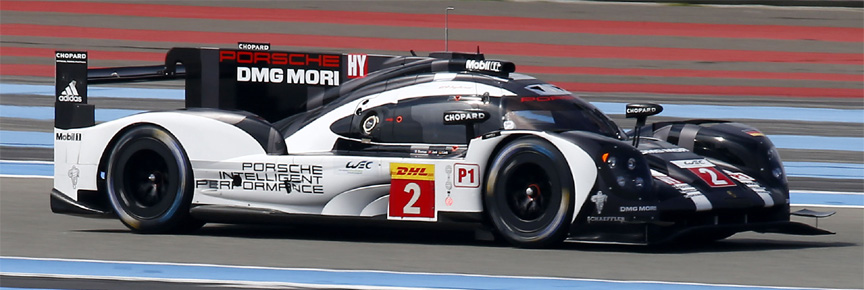
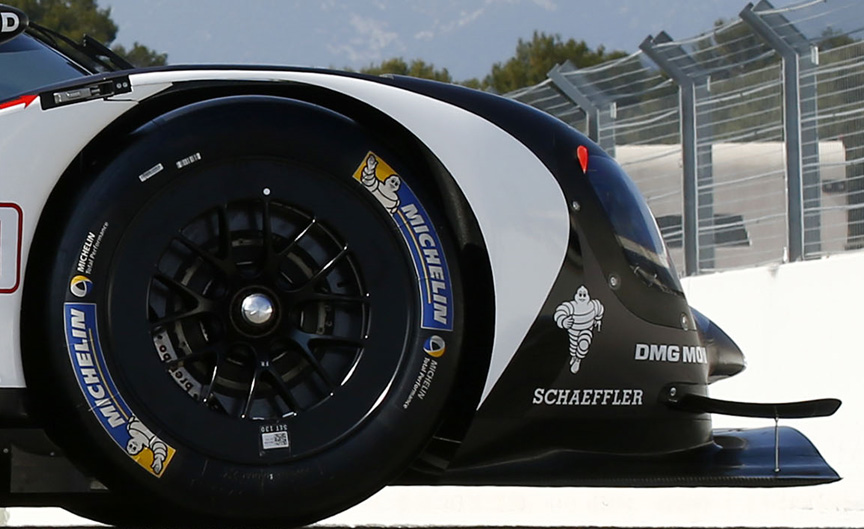
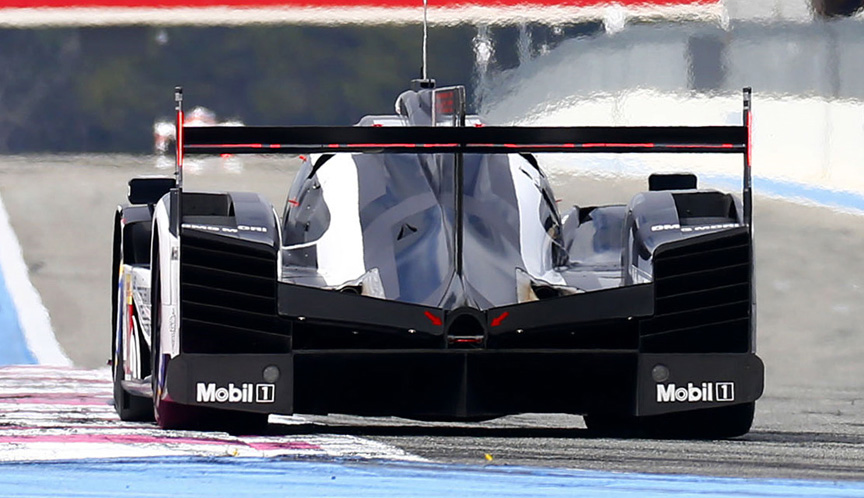
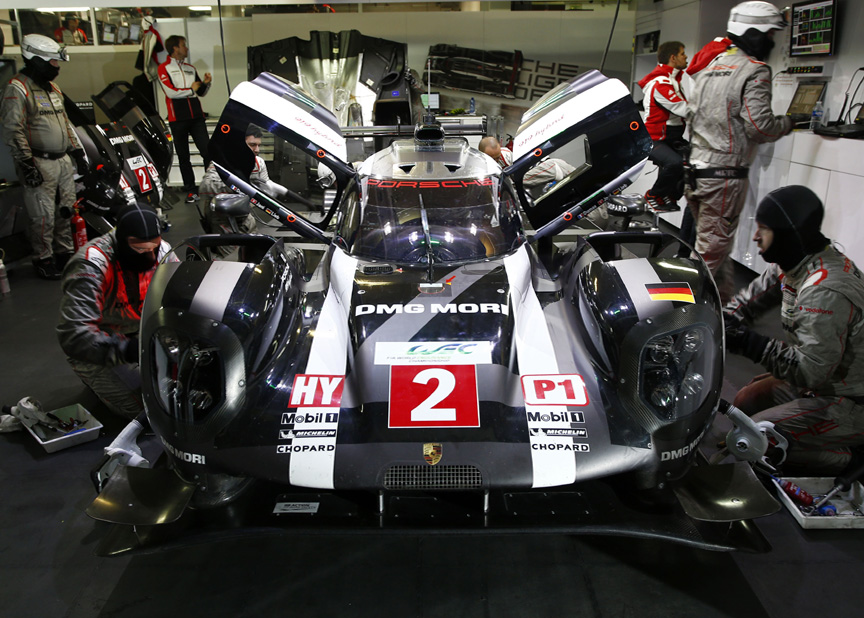

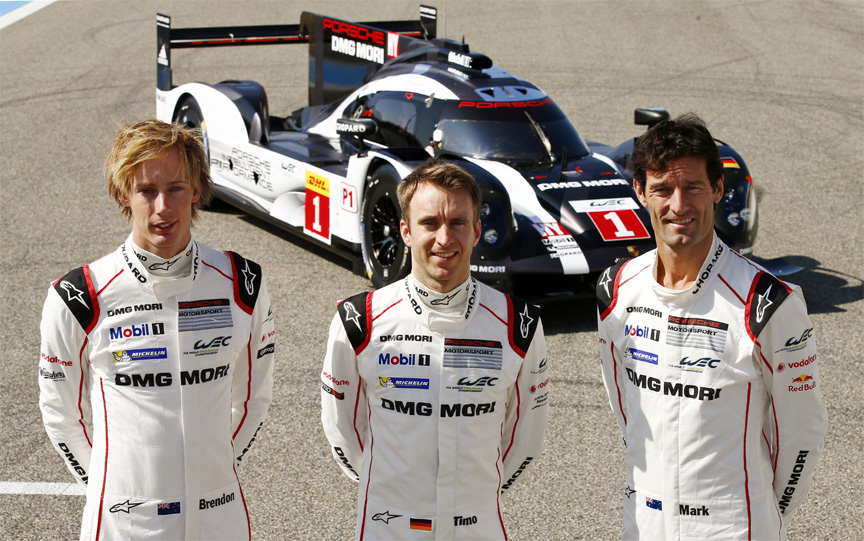
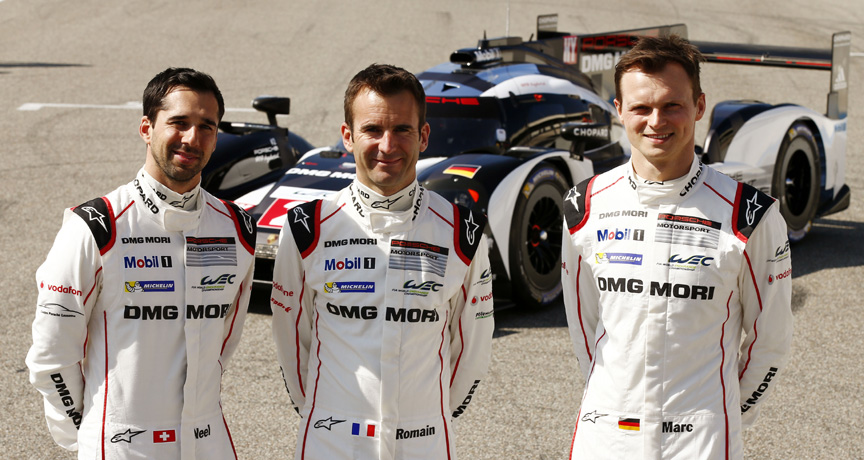
Driver comments after the prologue:
Mark Webber: “The now mandatory bigger headrest to me is not an issue for the driver change.”
Romain Dumas: “The communication with our new race engineer, Jeromy Moore, goes well./—/ Despite the lower fuel consumption with the restrictions from the new rules we are nearly as quick as in 2015.”
2016 Silverstone 6h: Victory
Team Principal Andreas Seidl: “For the first time we have a high downforce aero package in place for Silverstone circuit’s fast corners. In the previous years we had no resources to do that, because we focussed so much on Le Mans. Since the 2015 WEC finale in November we have covered almost 23,000 kilometres of testing with the 919 in different specifications.”
Andreas Seidl: “Our outstanding series of 11 consecutive pole positions came to an end today. Audi put in a better performance in the conditions we encountered.”
Timo Bernhard: “The new aero package gives us more downforce in the fast corners – Copse, Maggots and Beckets are really cool now. In return we have more drag and a lower top speed on the straights.”
Although Mark Webber in Porsche #1 started the race from 3rd position, after 16 laps he was leading the race. Neel Jani in Porsche #2 did the fastest lap of the race (1:40.303). On lap 58 he improved to 2nd because the Audis got into difficulties. Race positions then were 1-2 for Porsche. On the 71st lap Brendon Hartley in the leading #1 Porsche 919 unfortunately hit #86 Porsche 911, taking both out of the race.
Brendon Hartley (919 #1): “The car was incredibly good and Mark did a mega first stint. When I took over everything was fine. I had a comfortable lead, didn’t feel under pressure and did a good job in traffic. Then I wanted to get passed a GT car on the outside, which is quite normal through corner two, but the driver didn’t see me and used all the road. It happened very quickly and we made contact. It was a racing incident that could have been avoided, and I am sorry for both the Gulf racing GT team and for our car number 1 crew.”
After #1 Porsche crashed, #2 Porsche took the lead. Then, #7 Audi took the lead. After 161 laps the 919 #2, that was again temporarily leading, came in for fuel and had only the tyres on the left side changed to save time. When the hunt for the #7 Audi was in full swing, a lap later Porsche #2 had to pit again because of a puncture on the front right.
Although Audi R18 #7 of Marcel Fässler, André Lotterer, Benoît Tréluyer finished first, the car was disqualified later because of the violation of technical rules and Porsche #2 was declared as the winner (in the race the Porsche had finished 46 seconds behind the Audi). The thickness of the skid block of the #7 Audi represented a breach of the regulations. It is a small violation, but the fact that the violation was intentional, cannot be approved at the world level event.
Romain Dumas (919 #2): “During my first stint after the race start I touched a GT car and damaged the front aero. Afterwards the car was pretty understeery until the nose was changed. My second time in the car was also tricky. It was a big fight with Benoit Tréluyer in the Audi. I was a little bit faster, but it was difficult to pass him. Unfortunately I had slight contact with a Ford and went off track a bit. This cost us about 13 seconds.”
Race result 6 Hours of Silverstone 2016:
- Porsche 919 Hybrid, Dumas/Jani/Lieb
- Toyota TS050 Hybrid, Conway/Kobayashi/Sarrazin -1 lap
- Rebellion R-One AER, Imperatori/Kraihamer/Tuscher -11 laps
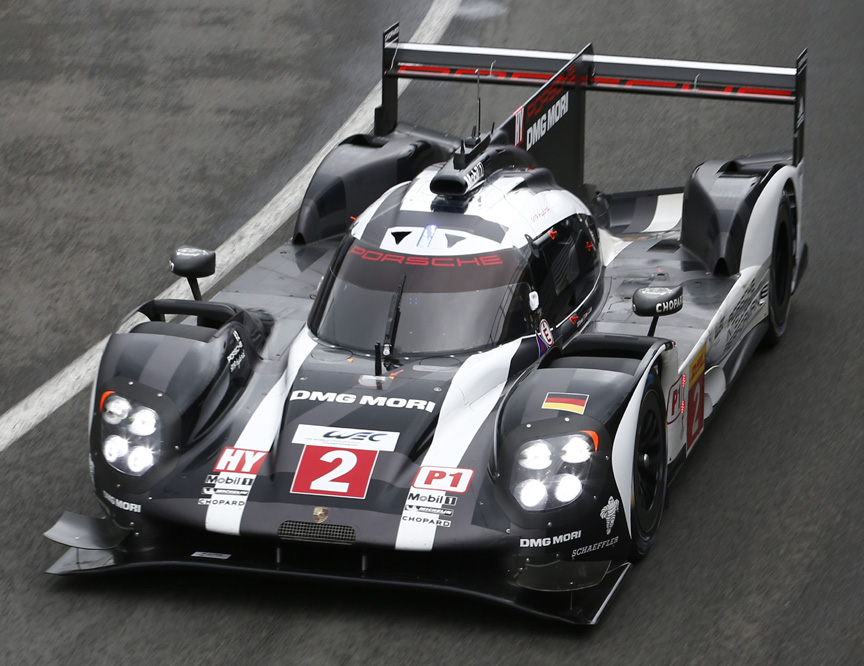
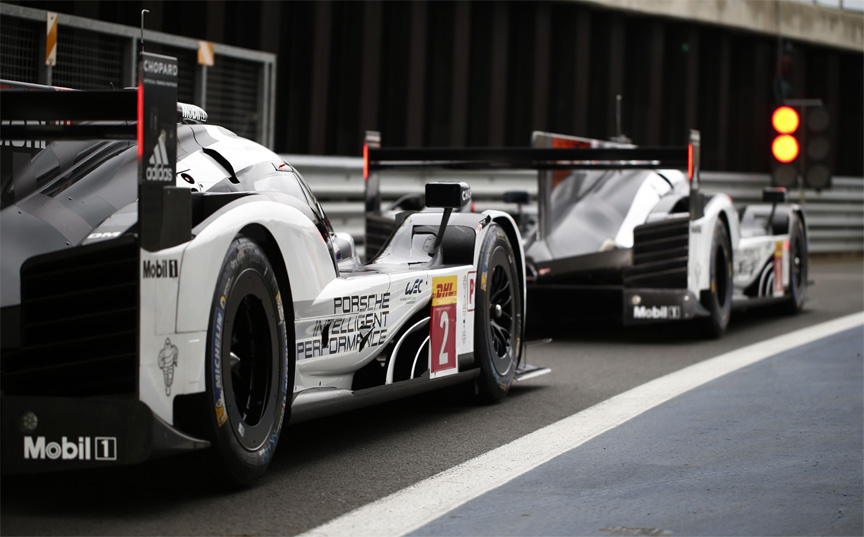
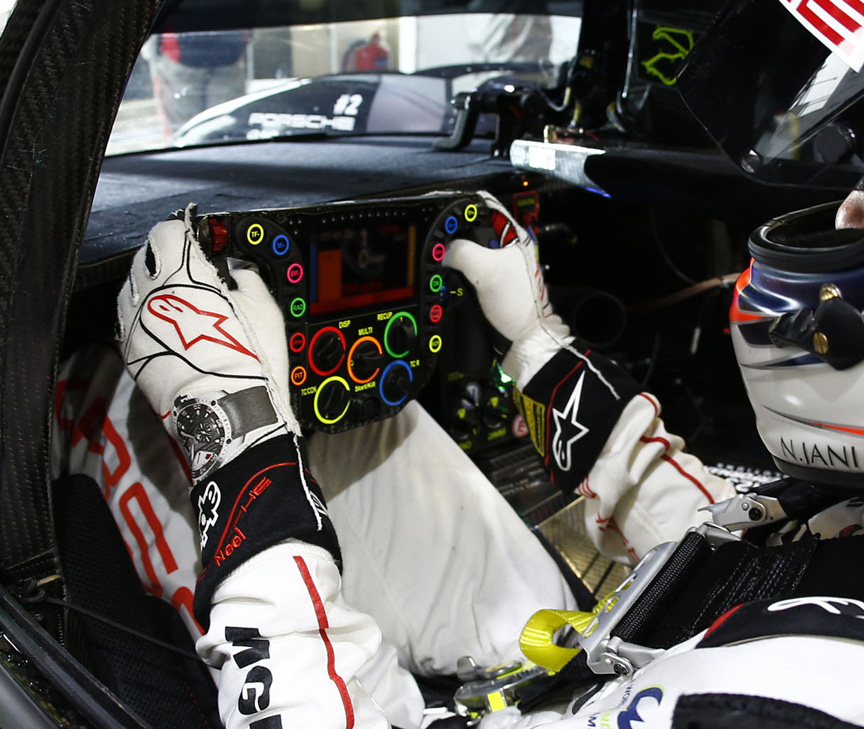
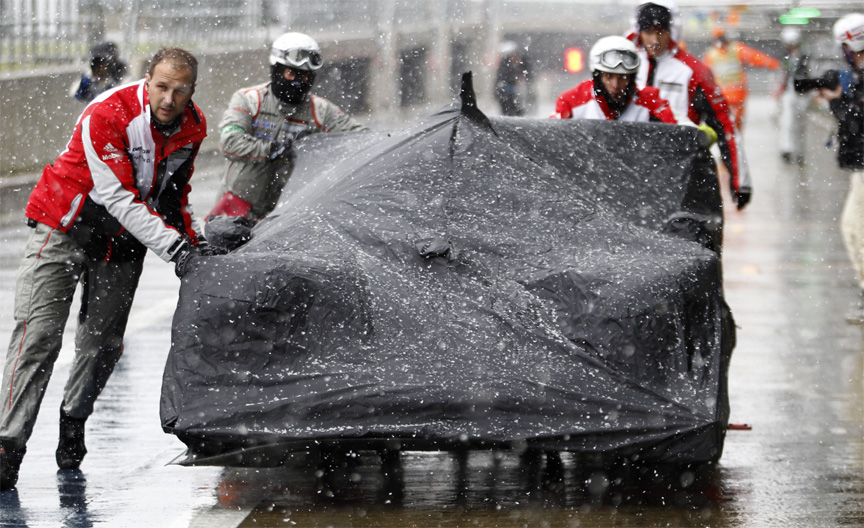
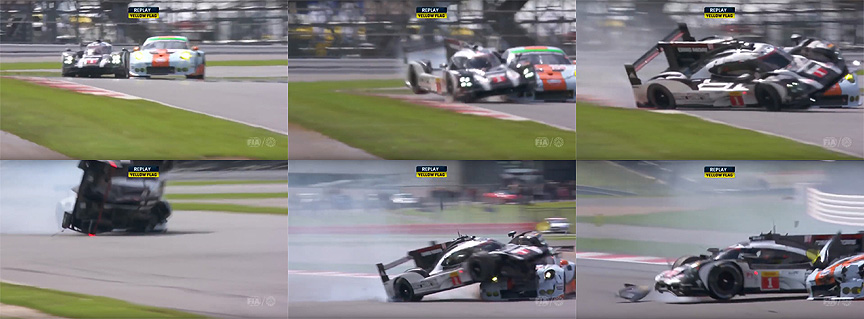
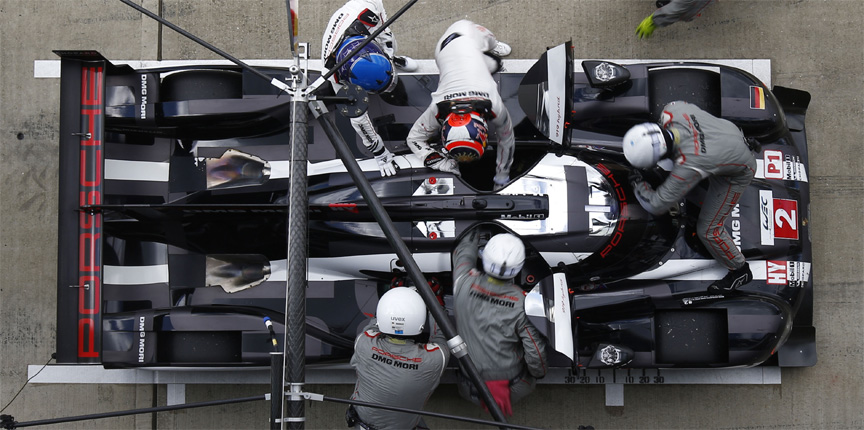

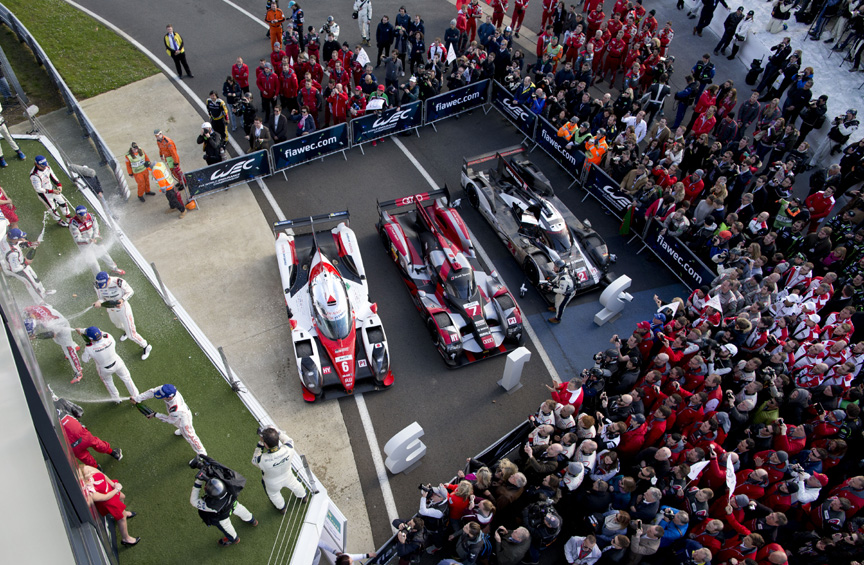
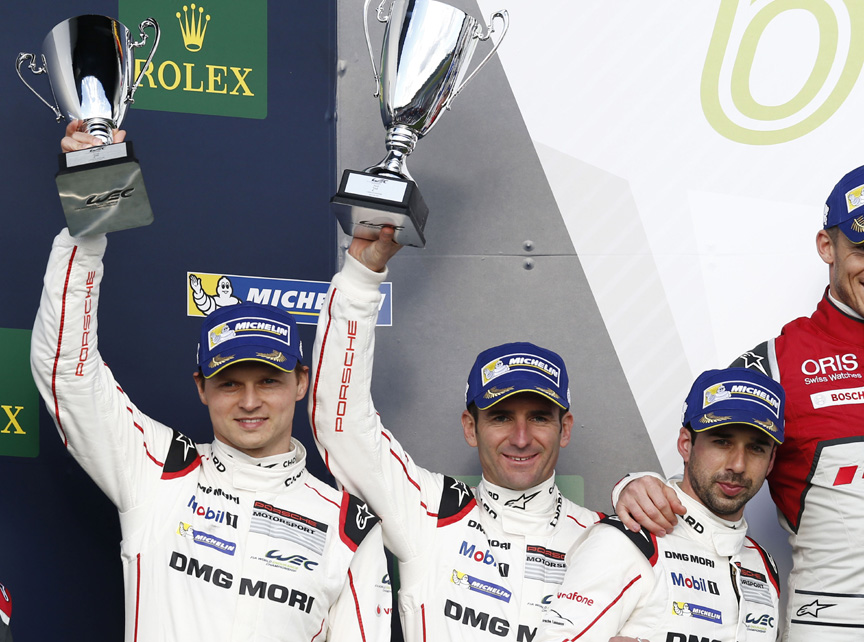
2016 Spa-Francorchamps 6h: 2nd Place
The two Porsche 919 Hybrids have the low downforce aerodynamic package for the first time, designed for the Le Mans track. The headlamps are new again, the second time already in 2016. Timo Bernhard and Brendon Hartley claimed pole position for car #1 (one championship point) and the Porsche #2 earned to start the race from the second position.
The fastest lap of the race, achieved by Brendon Hartley in #1, gives an idea of what would have been possible if the car would not have suffered two punctures which damaged the car aerodynamically and mechanically. The #1 car had to spend around 1.5 hours in the pits for repairs and finished the race on 27th position. The #2 Porsche had problems with hybrid system, but so did other teams and 919 #2 finished second. Audi won the race.
Fritz Enzinger, Vice President Porsche LMP1: “The opening round at Silverstone wasn’t easy but here in Spa it was even more difficult, although we were starting from the front row with both cars. Having achieved a second place finish despite the technical problems early in the race on the number 2 car proves again: giving up is never an option in endurance racing.”
Andreas Seidl, Team Principal: “For our car number 1 crew it is bitter to be left almost empty handed after two rounds because of massively bad luck in the races. In Silverstone they had an accident, here it was a puncture with huge consequences. Crew number 2 did a superb job despite the early problem with the hybrid system and achieved an almost sensational second place finish. With the new low downforce package we had, again, the fastest car on track. Now we have to improve the reliability in details and get ready for Le Mans.”
Timo Bernhard, 919 #1: “Today we definitely had the pace to win that race. The battle with Sébastien was good fun. Our strategy was alright and I believe I would have left him behind in the end. But in motor sports you just cannot control everything. Most probably I ran over debris in the last chicane where there had been accidents. Then I had to do a complete lap with the damaged tyre and that caused more damage, highly likely including the broken front gearbox.”
Neel Jani, 919 #2: “Without the full power from the hybrid system, traffic is difficult and you have to take care of the brake temperatures a lot. We have been treating our 919 as carefully as we could and then we were repeatedly promoted as others got in trouble.”
Race result 6 Hours of Spa 2016:
- Audi R18, Di Grassi/Duval/Jarvis 160 laps
- Porsche 919 Hybrid, Dumas/Jani/Lieb -2 laps
- Rebellion R-One AER, Imperatori/Kraihamer/Tuscher -4 laps
While the Porsche, Audi and Toyota LMP1-Hybrid teams are having different problems in the beginning of the season, non-hybrid LMP1 Rebellion R-One AER is doing very well (AER here means engine from Advanced Engine Research, not AbgasEnergieRückgewinnung, exhaust energy recovery, like in the Porsche 919). The internal combustion engine in the Rebellion R-One has similar power to the engine in the 919, just that it lacks the added power of the electric motor. Rebellion R-One AER driven by Alexandre Imperatori, Dominik Kraihamer and Matheo Tuscher has scored 3rd for the second time and Imperatori/Kraihamer/Tuscher are on the second place in 2016 Driver’s championship after Dumas/Jani/Lieb, the drivers of Porsche #2.
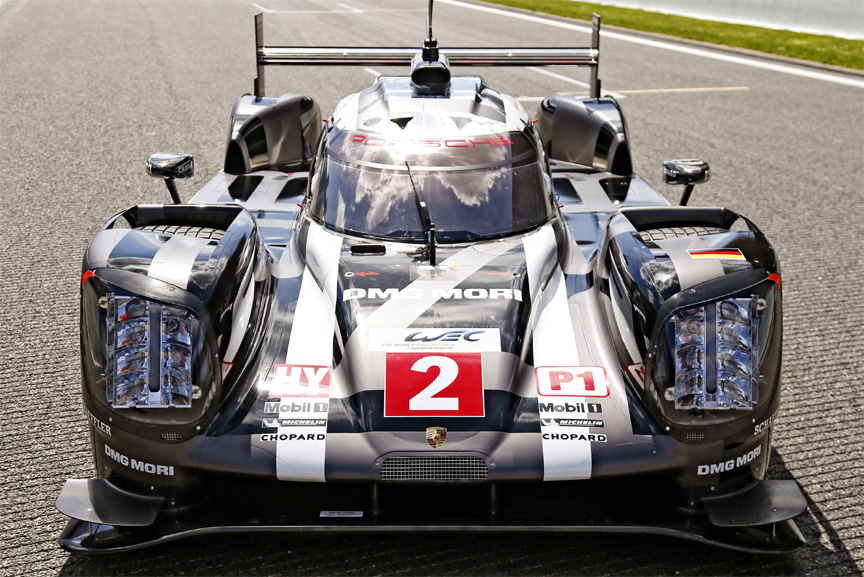
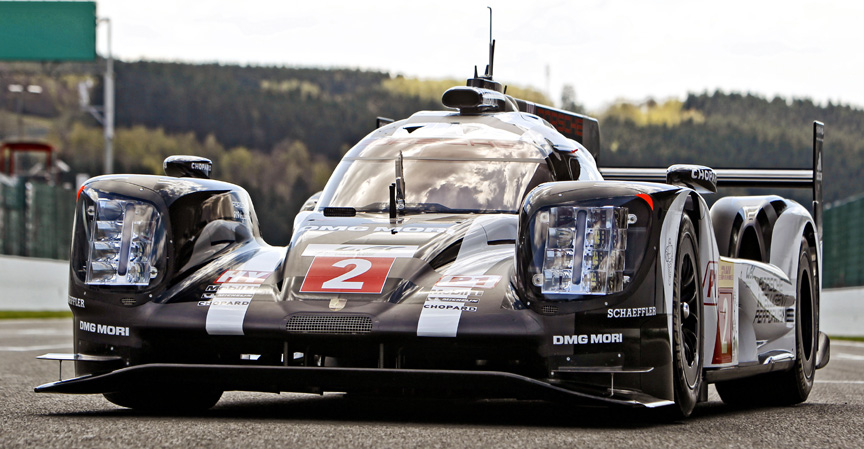
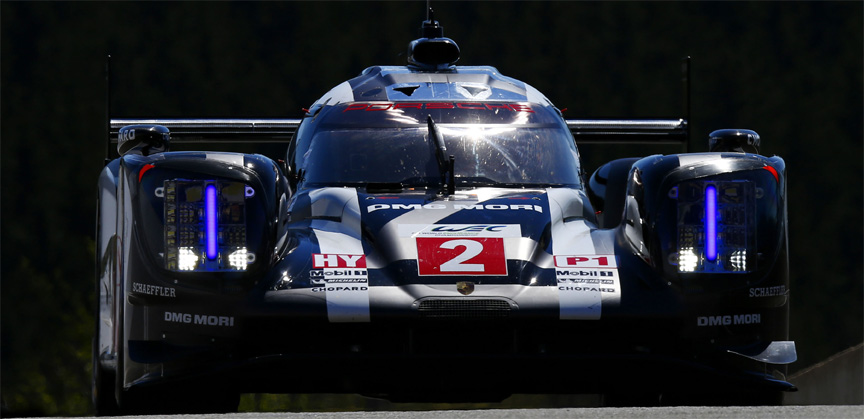
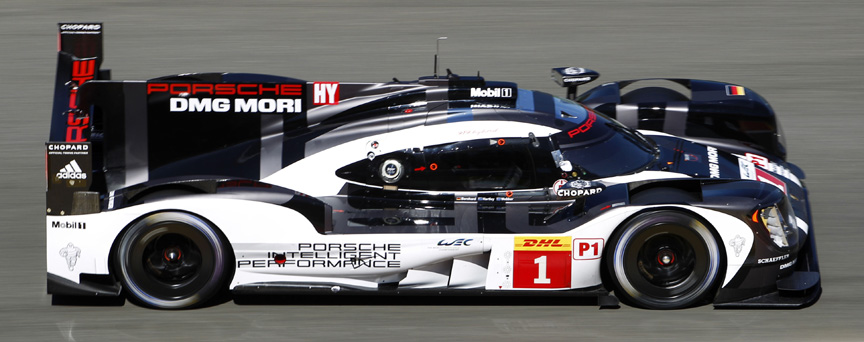

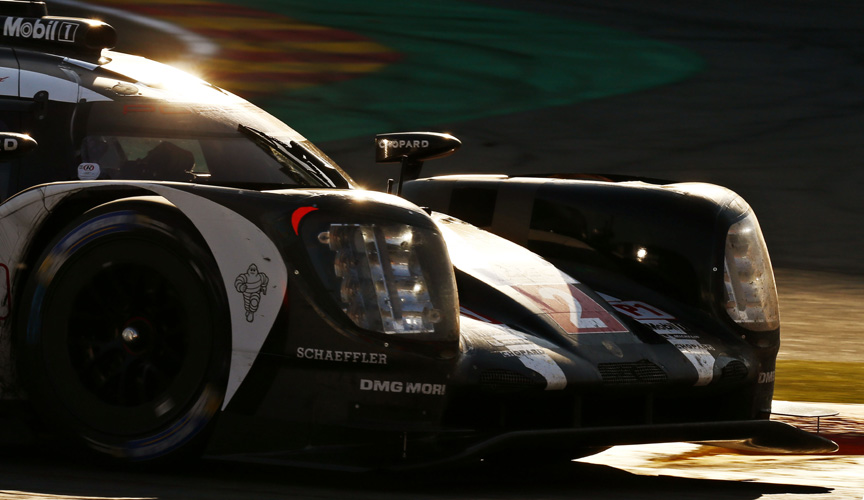
2016 Le Mans 24h: Sudden victory
The race
It was the first time since 1955 that so many teams – 60 – were allowed to race. The race was started on June 18 at 15 o’clock Le Mans time, but because of heavy rain, behind the safety car.
After almost an hour long safety car period the real race finally started. The first LMP1 car to suffer technical problems was Audi #7 that lost its turbocharger soon after the race speed was achieved. The turbocharger was replaced, but it took a lot of time. During the first hours the leader position swapped between Toyota #6 and Porsche #1, the leader changes happened when somebody had to visit the pits for fuel, tires or driver change.
Eight hours to the race and Porsche #1 starts to suffer high water temperature. The car is taken into garage for long investigation. Mark Webber, Brendon Hartley and Timo Bernhard have to admit, their car is not in the game for win anymore.
#1 is able to go out after water pump replacement. Still, the cooling issue is not fixed and the car returns to garage after just one lap. In total two and half hours are lost, when the car is finally fixed. In the meantime Porsche #2 managed to lead the race for some time, but it is Toyota #6 that is not making life easy as it burns a bit less fuel and can do an extra lap before refueling.
The race is led by a combination of Toyotas and the Porsche #2. The “podium” group has secure lead to the following Audis which in addition both suffer tyre punctures in the night. In the dawn Porsche #2 also has to make extra pit stop because of a puncture, but is still strongly in the game. 7 o’clock in the morning, after 16 hours, Porsche #2 is just 19 seconds from leading Toyota #6. The driver of the leading car was closely following Porsche #1 (that was almost 40 laps behind) when he lost the control in a corner and slided to the gravel. Thanks to 4WD, the Toyota easily got away from the gravel, but it had some light damage to the bodywork. The first three were really close to each other now. The race report after 17 hours said, the leading car was now Toyota #5, with #6 Toyota 0.5 seconds behind and #2 Porsche 3.2 seconds from the leader.
Until the 20th hour Audi is still in the game with its #8 car that is just 1 lap behind the leading trio, but then Audi is taken into garage for brake repair. It takes 40 minutes, but #8 retains its 4th position, now 13 laps behind the strong trio of Porsche and two Toyotas. In the 22nd hour Toyota #6 is taken in to repair the body that was damaged a few hours earlier when the car slided to the gravel. As #6 Toyota had to spend 9 minutes in the pits, it was now 3 laps behind the #5 Toyota and #2 Porsche fighting for the win.
When it was just one hour to go, Toyota #5 was leading and Porsche #2 was 28 seconds behind. 11 minutes before the end of the race Porsche #2 is suffering a puncture and is taken in for a quick tyre change. It is clear that Toyota will win and Porsche will take the second place. Then, 6 minutes before the end of the race, the leading Toyota starts to lose power…
Toyota #5 stops on the main straight and Porsche #2 passes it to go to the final lap. Racing can get more tragic, but not more dramatic than this! Everyone is baffled on the grand stands, in the garages of Toyota and Porsche and Neel Jani behind the wheel of the now leading Porsche.
The average speed of the winning Porsche 919 Hybrid over the 24 hour race with the safety car periods and 38 minutes total time in the pits for 29 refuelling and 10 tyre changes, was 216.4 km/h (134.4 mph). Although the number of laps covered by Toyota #5 would have given it the second place result, according to the rules, it was disqualified as it spent more than 6 minutes on its last lap. So, now the Toyota #6 was second on the podium (3 laps behind Porsche) and third place went to #8 Audi (12 laps behind). Regarding the end of the race, we could only quote Audi team manager dr. Ullrich “Always expect the unexpected at Le Mans!”
Race result 24 Hours of Le Mans 2016:
- Porsche 919 Hybrid, Dumas/Jani/Lieb 384 laps
- Toyota TS050 Hybrid, Conway/Kobayashi/Sarrazin -3 laps
- Audi R18, Di Grassi/Duval/Jarvis -12 laps
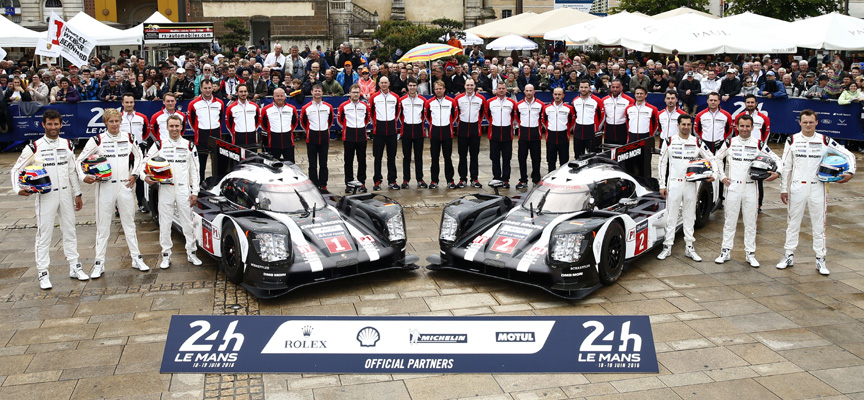
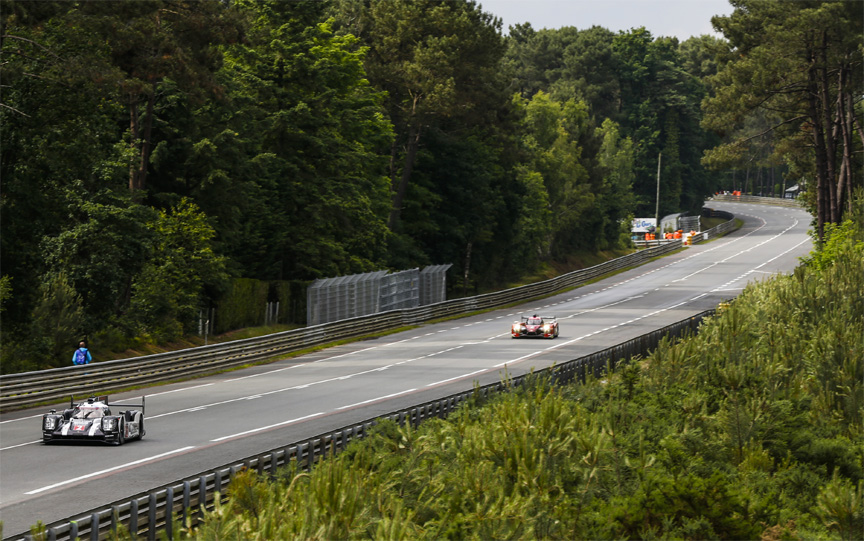
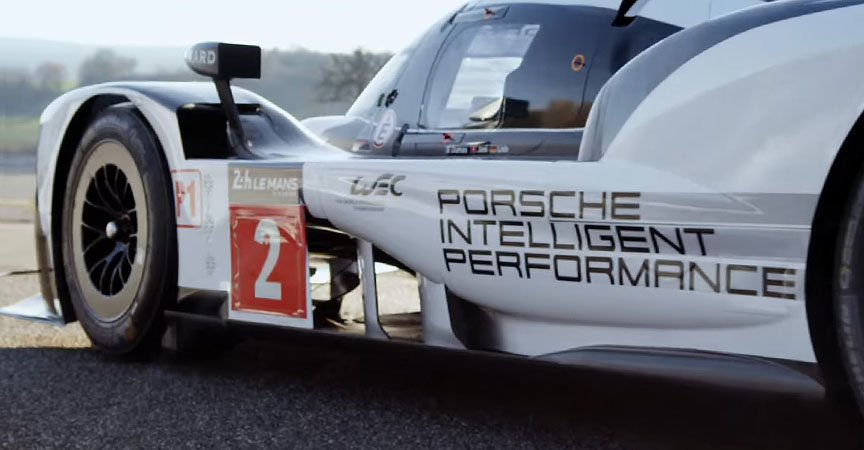
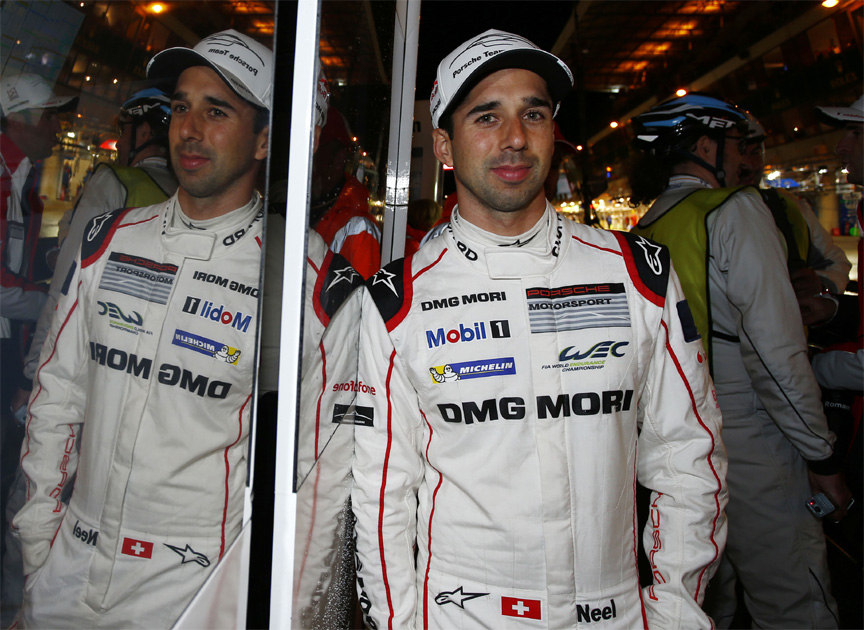
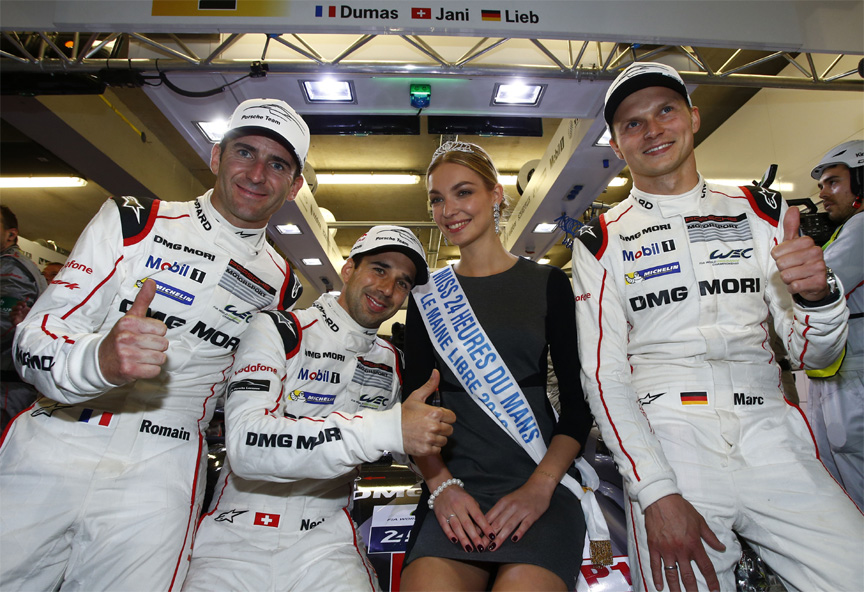
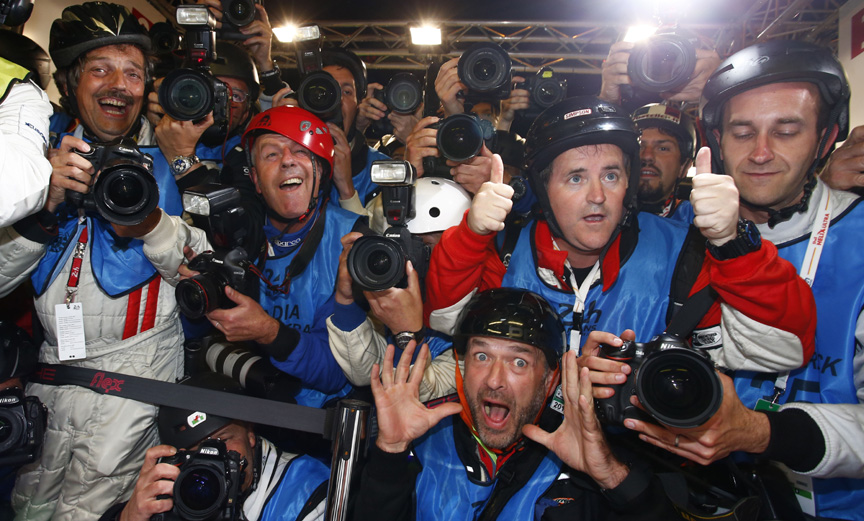
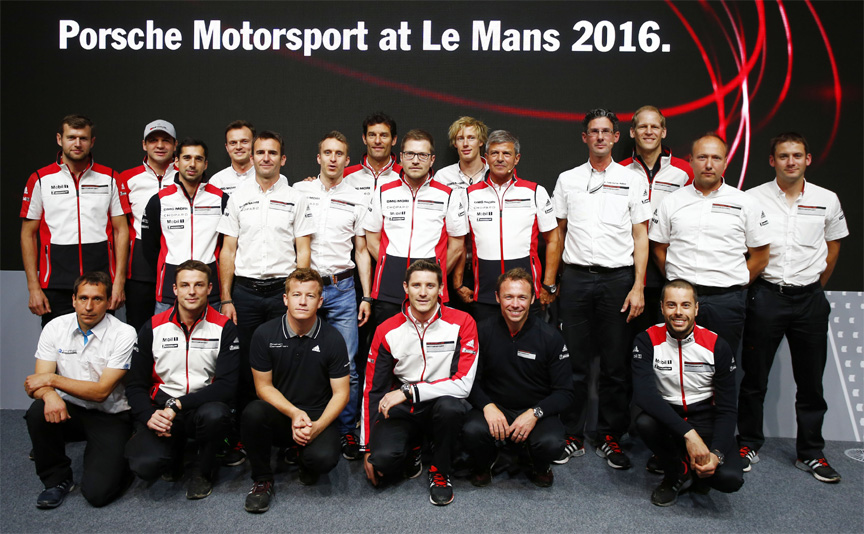
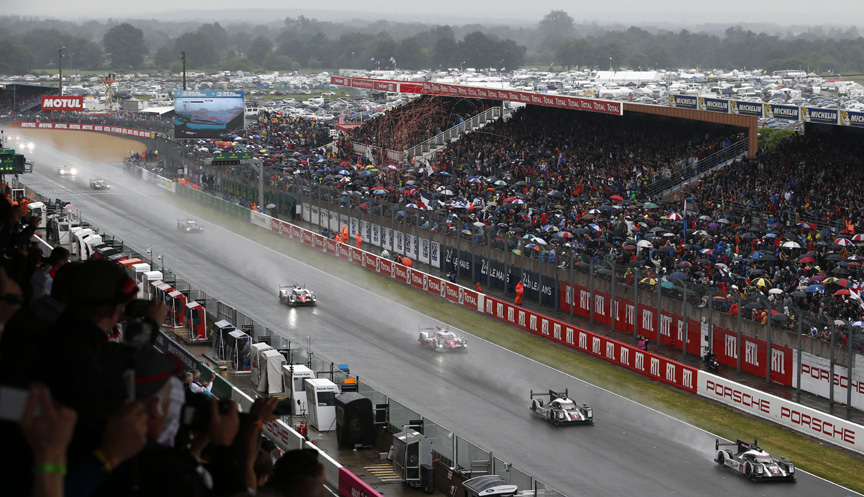
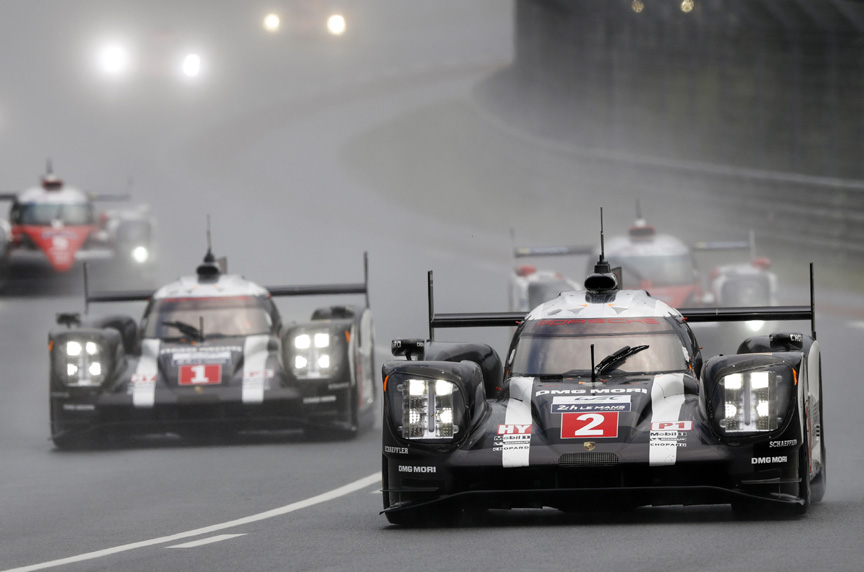
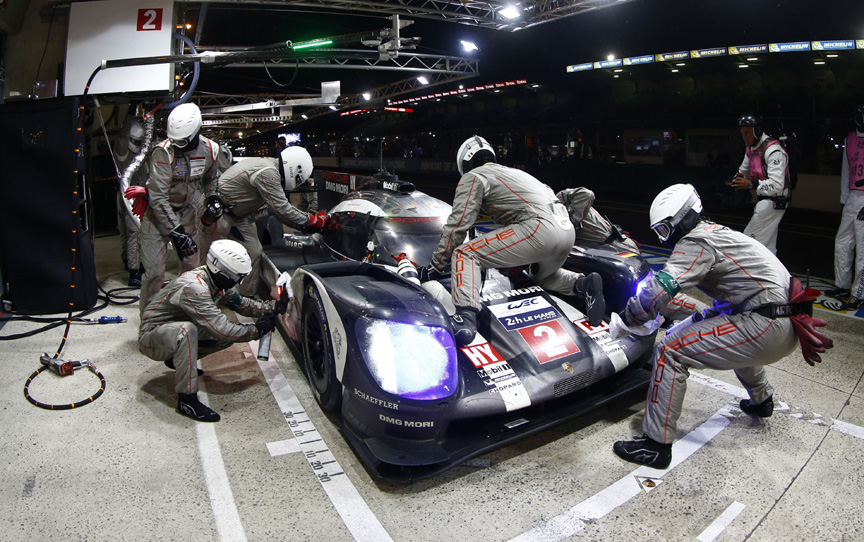
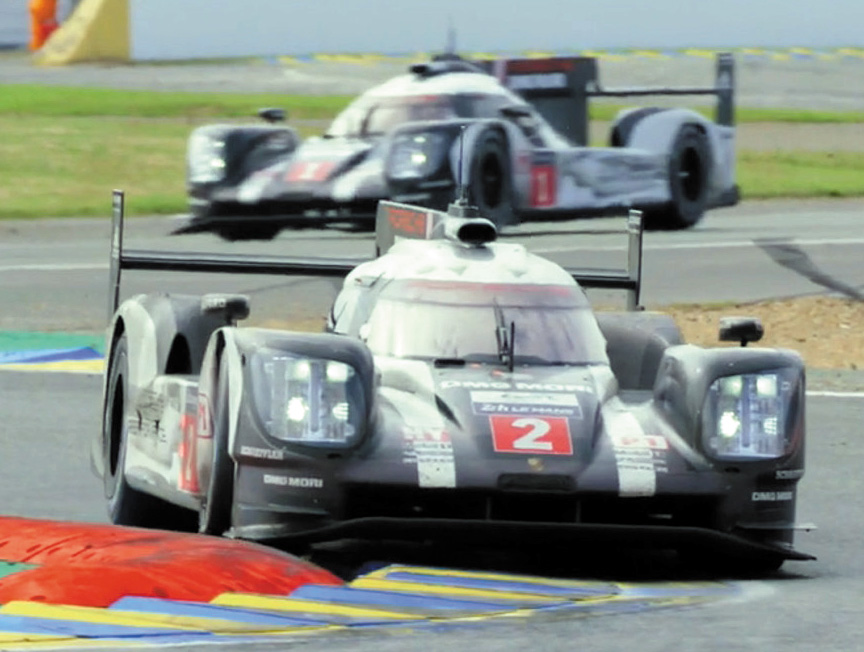
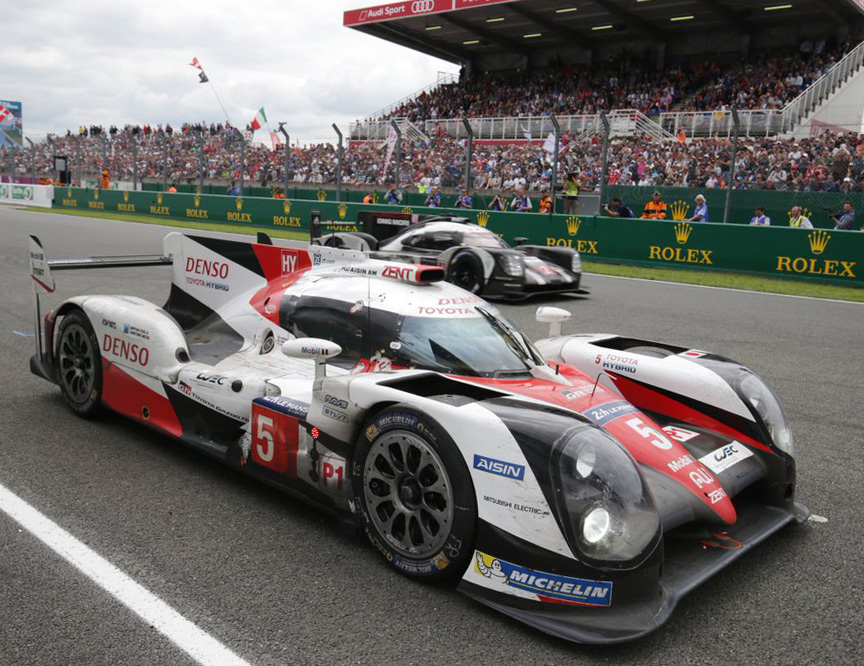
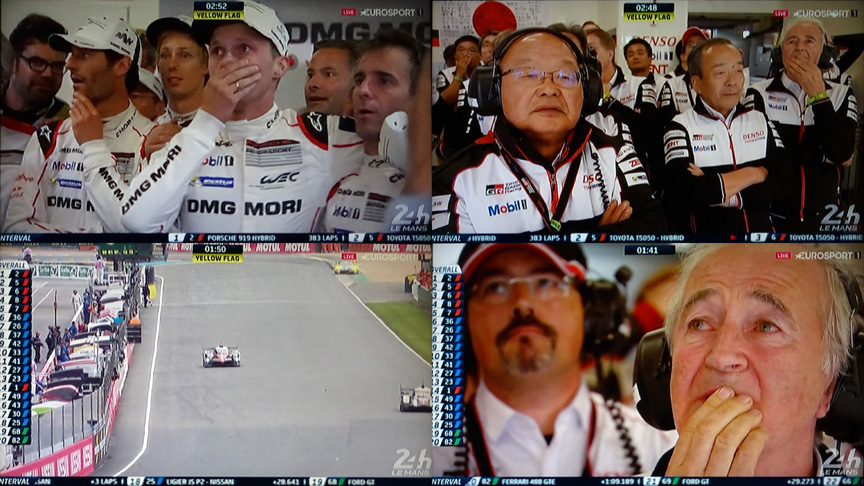
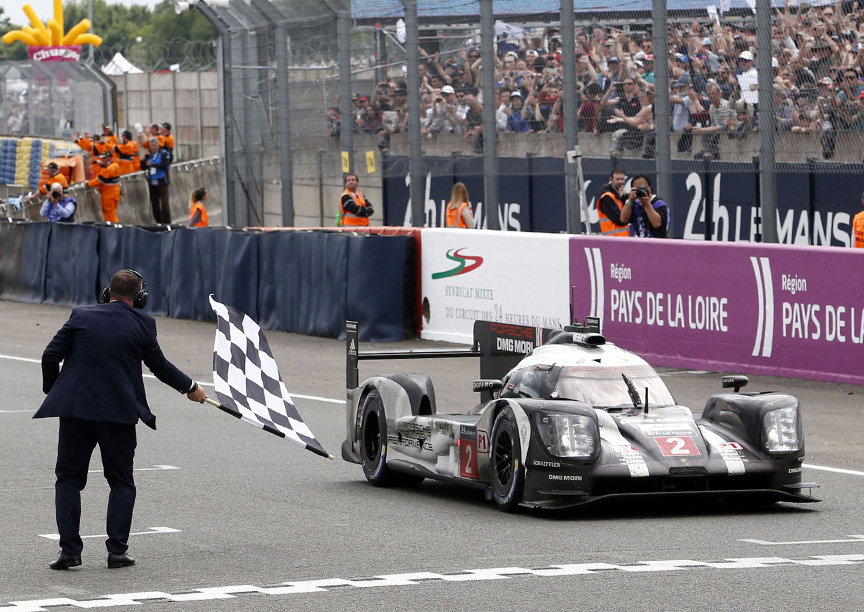
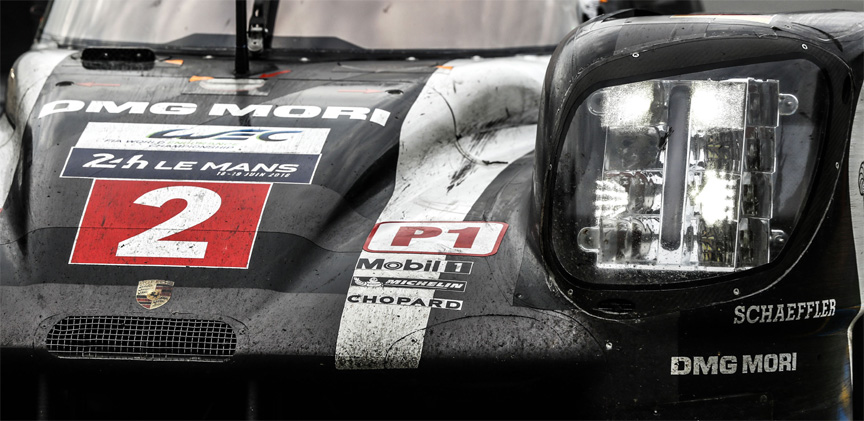
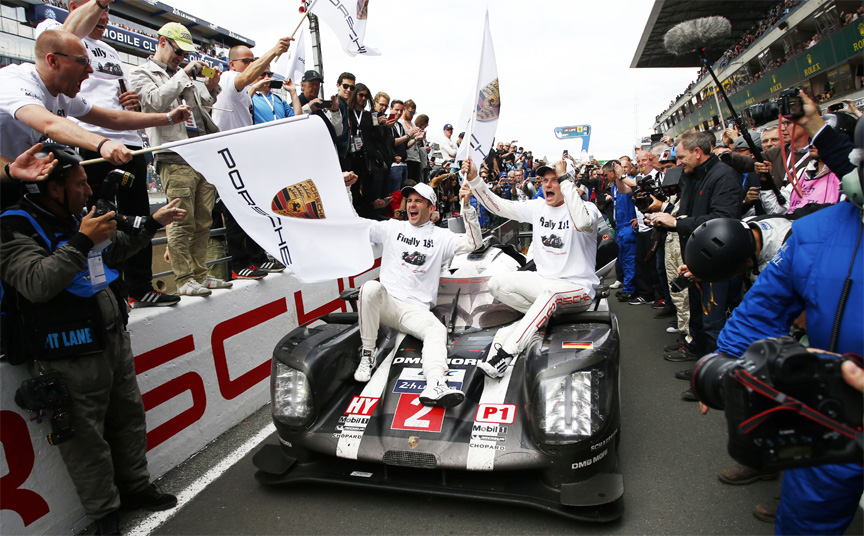
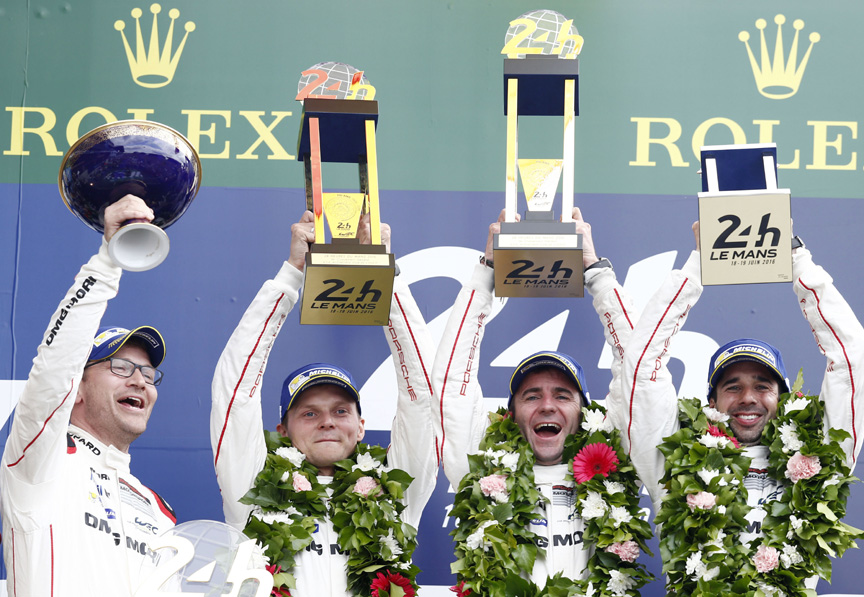
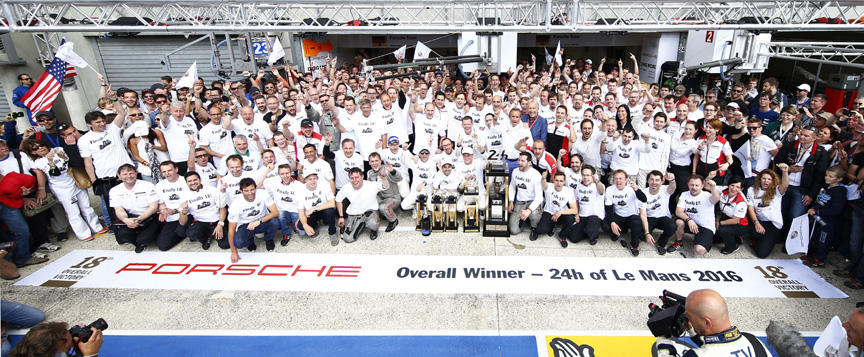
2016 Nürburgring 6h: Victory
Three aerodynamic packages are allowed for one season and the third version of the 919-16 is shown at the Nürburgring. The nose is significantly different. The headlamps are new again and the rear is a bit different in the area of the exhaust pipes. The reigning world champions Timo Bernhard, Brendon Hartley and Mark Webber repeated their last year’s win.
Race result 6 Hours of Nürburgring 2016:
- Porsche 919 Hybrid, Bernhard/Webber/Hartley 194 laps
- Audi R18, Di Grassi/Duval/Jarvis 194 laps
- Audi R18, Fässler/Lotterer 194 laps
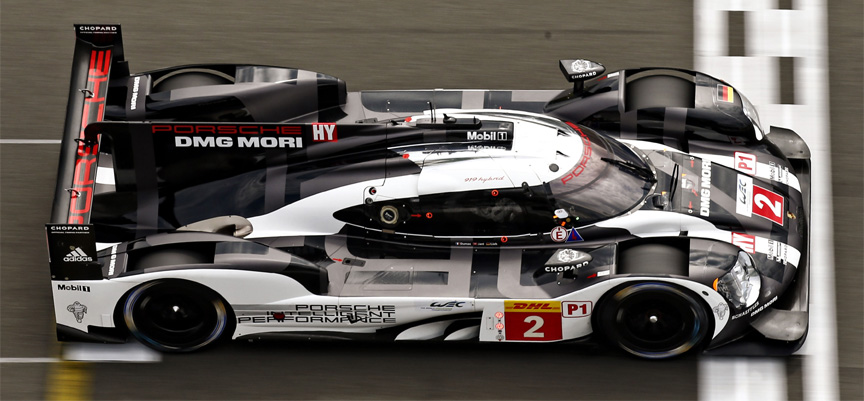
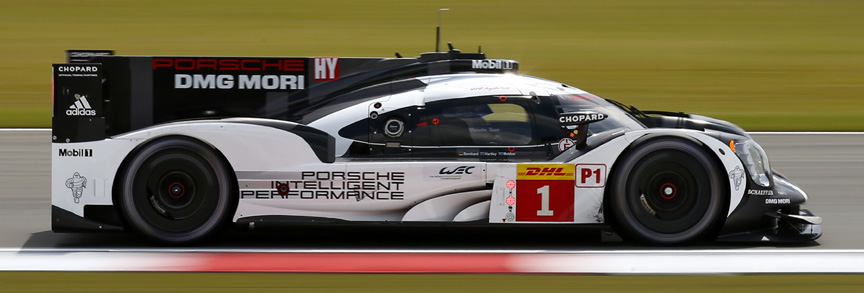
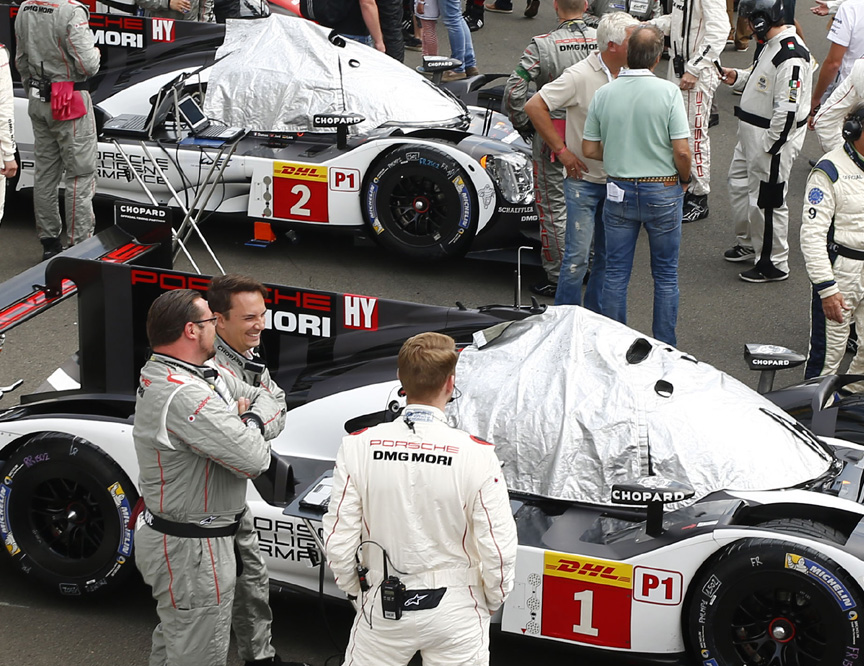
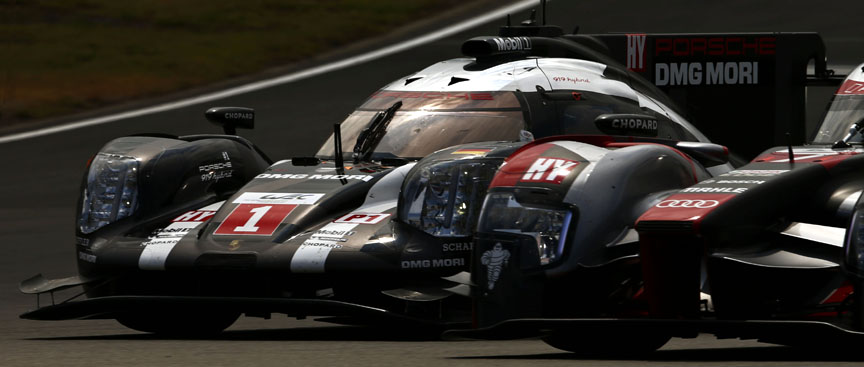
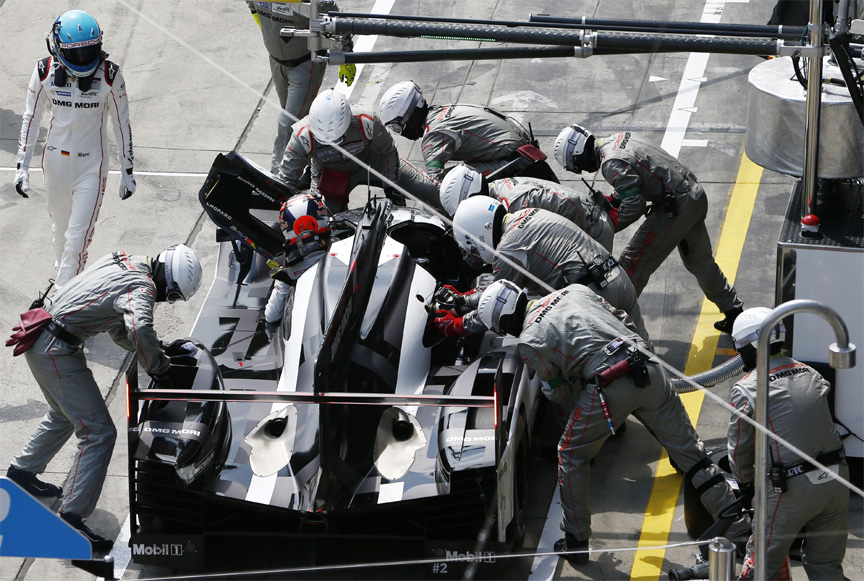
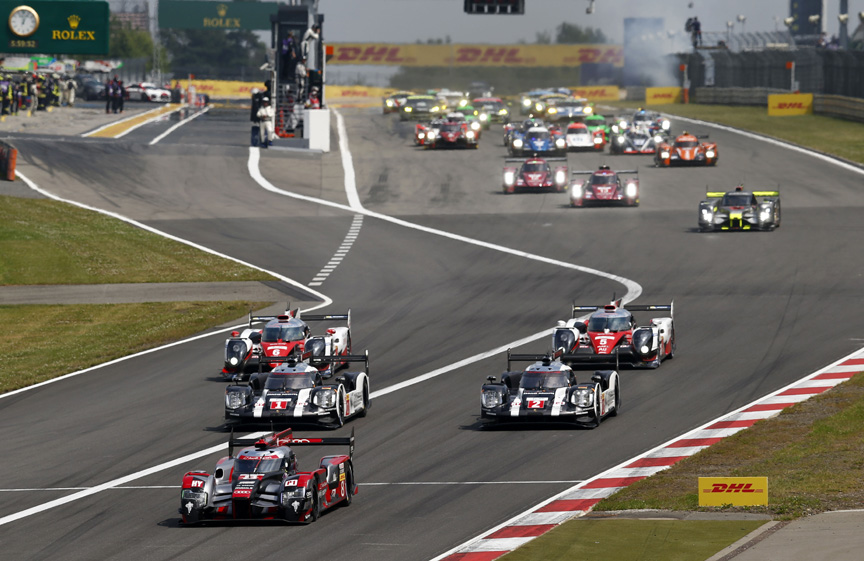
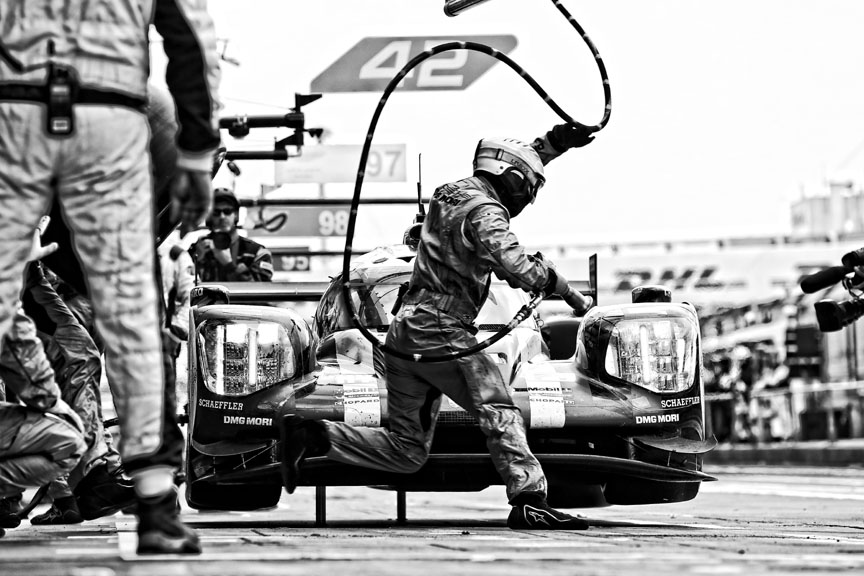
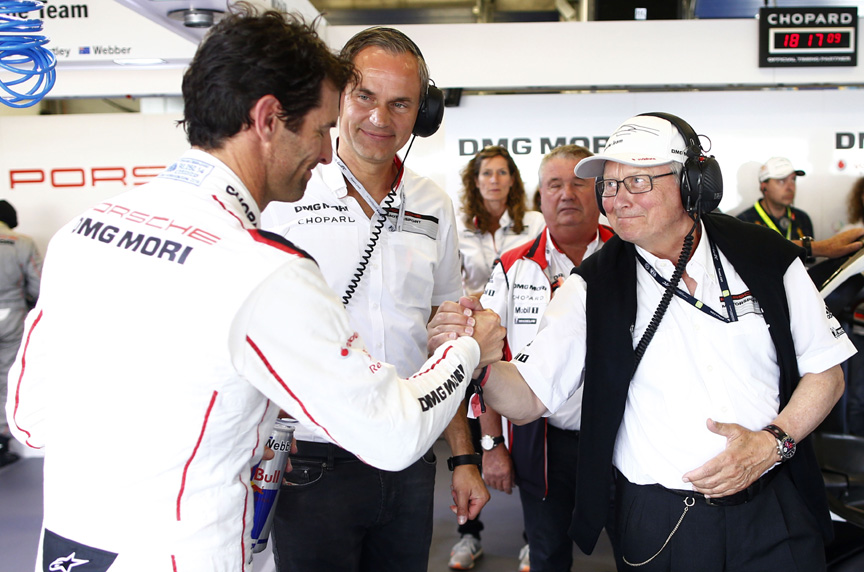
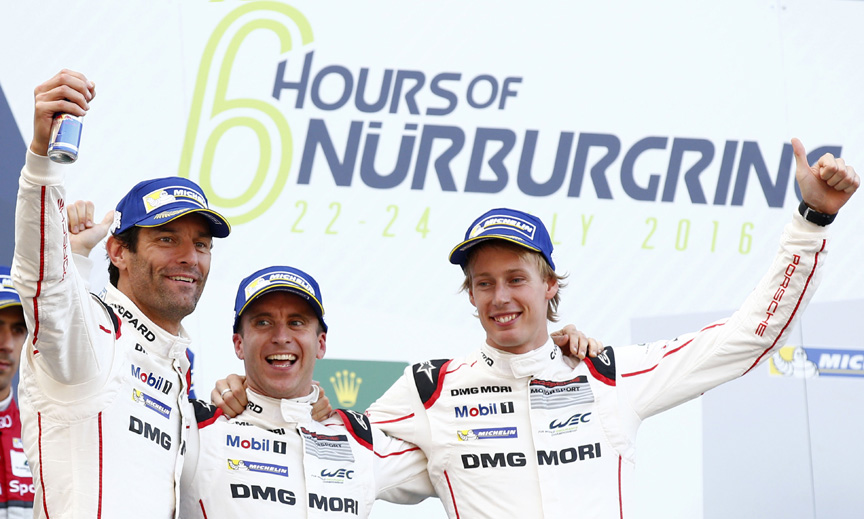
2016 Mexico 6h: Victory
2015 FIA WEC World Champions Webber/Hartley/Bernhard won the race. Four cars – Porsche #1, Audi #7, Toyota #6 and Porsche #2 – finished the race after 230 laps on the same lap. 2015 FIA WEC World Champions Webber/Hartley/Bernhard won the race. Four cars – Porsche #1, Audi #7, Toyota #6 and Porsche #2 – finished the race after 230 laps on the same lap.
Race result 6 Hours of Mexico 2016:
- Porsche 919 Hybrid, Bernhard/Webber/Hartley 230 laps
- Audi R18, Fässler/Lotterer 230 laps
- Toyota TS050 Hybrid, Sarrazin/Conway/Kobayachi 230 laps
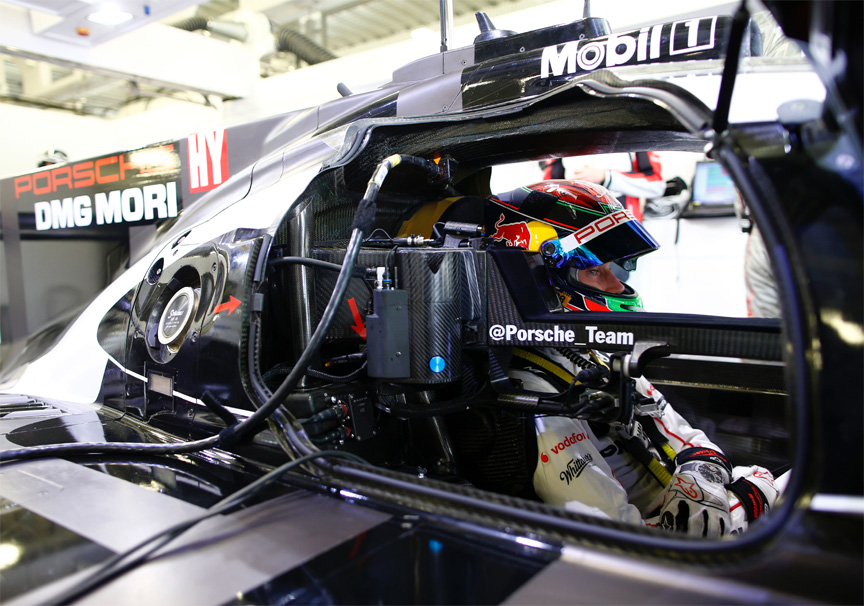
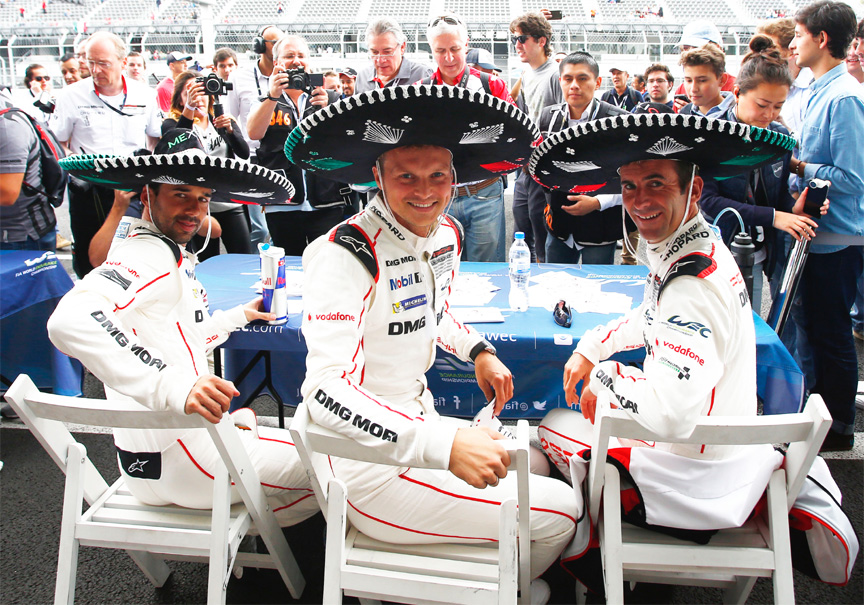
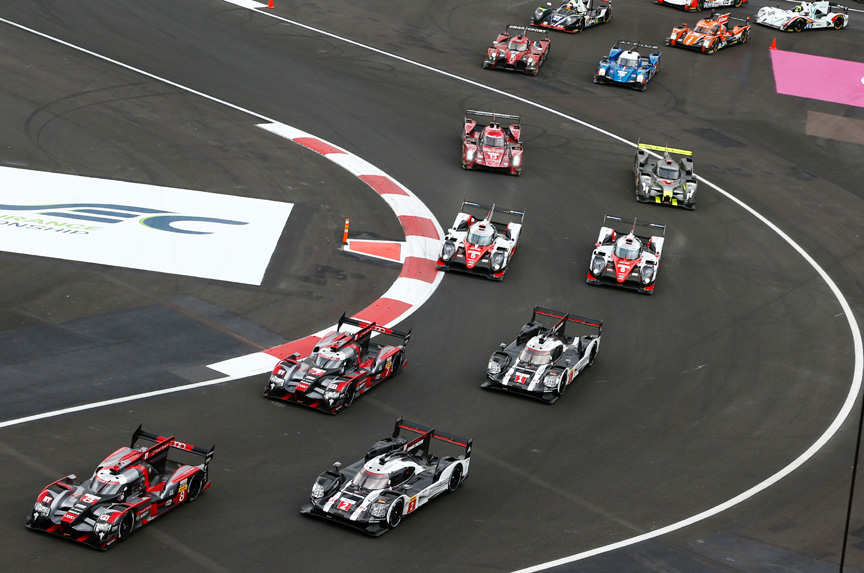
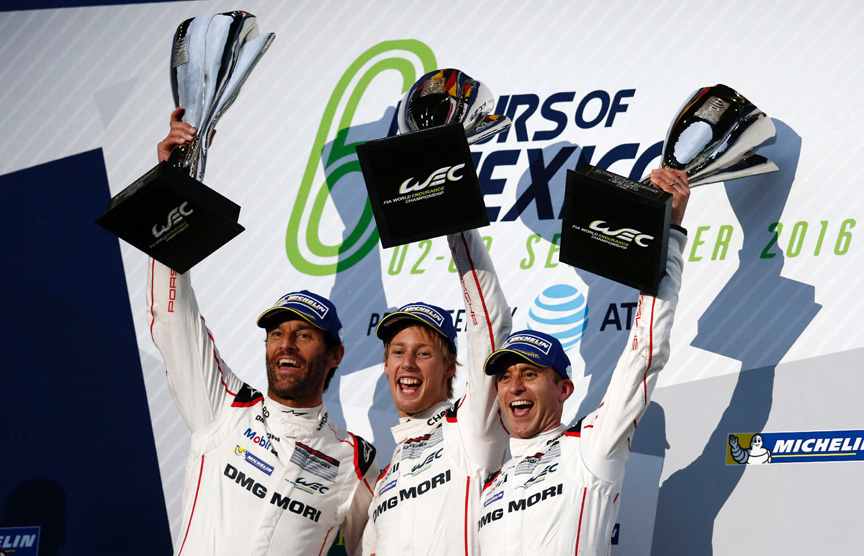
2016 Circuit of the Americas 6h: Victory
It was the third race in a row where all podium cars finished on the same lap – fantastic job from FIA WEC to make the cars so equal. And it was the third race in a row won by 2015 FIA WEC LMP1 champions Mark Webber, Brendon Hartley and Timo Bernhard.
Race result 6 Hours of circuit of the Americas 2016:
- Porsche 919 Hybrid, Bernhard/Webber/Hartley 186 laps
- Audi R18, Di Grassi/Duval/Jarvis 186 laps
- Toyota TS050 Hybrid, Sarrazin/Conway/Kobayachi 186 laps
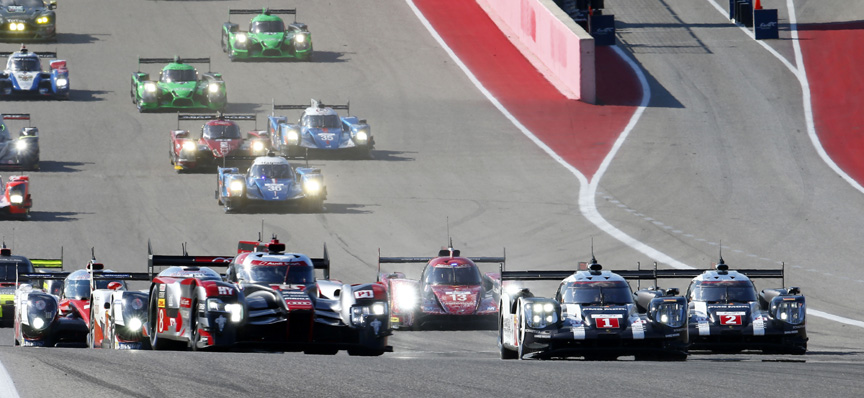
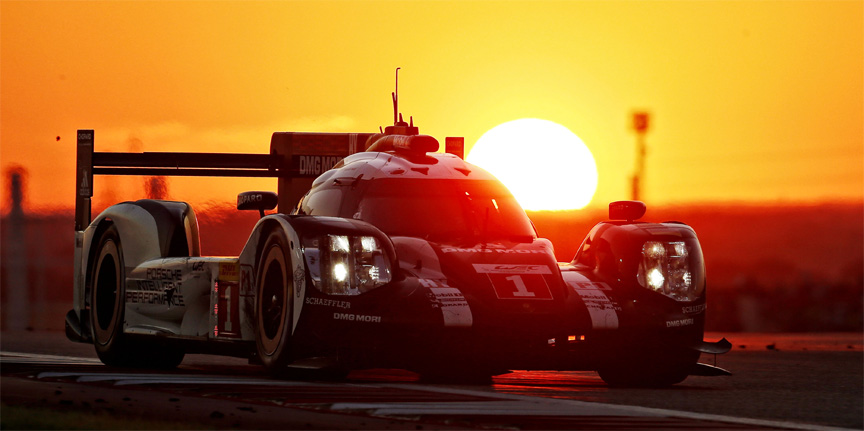
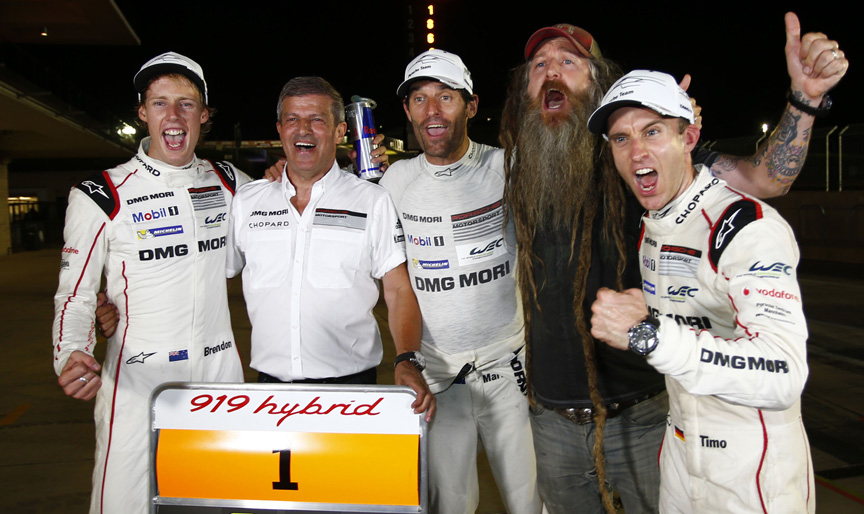
2016 Fuji 6h: 3rd Place
Race result 6 Hours of Fuji 2016:
- Toyota TS050 Hybrid, Sarrazin/Conway/Kobayachi 244 laps
- Audi R18, Di Grassi/Duval/Jarvis 244 laps
- Porsche 919 Hybrid, Bernhard/Webber/Hartley 244 laps
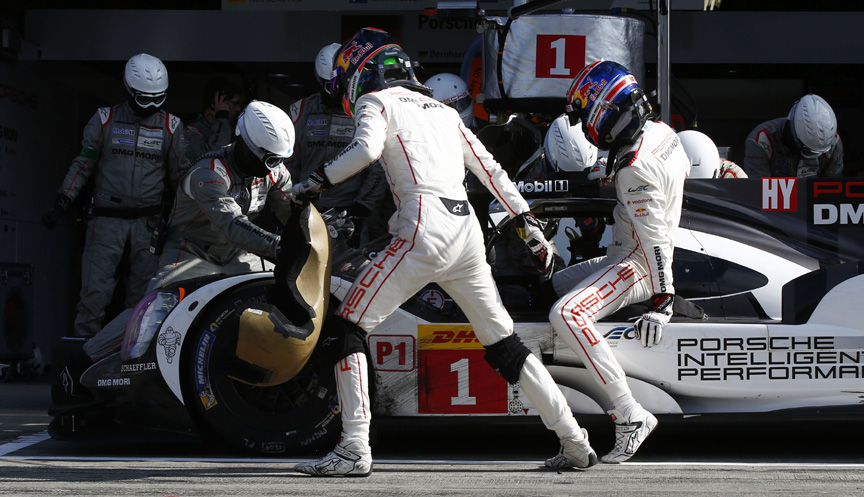
Shanghai 6h: Victory
Race result 6 Hours of Shanghai 2016:
- Porsche 919 Hybrid, Bernhard/Webber/Hartley 195 laps
- Toyota TS050 Hybrid, Sarrazin/Conway/Kobayachi 195 laps
- Toyota TS050 Hybrid, Davidson/Buemi/Nakajima 195 laps
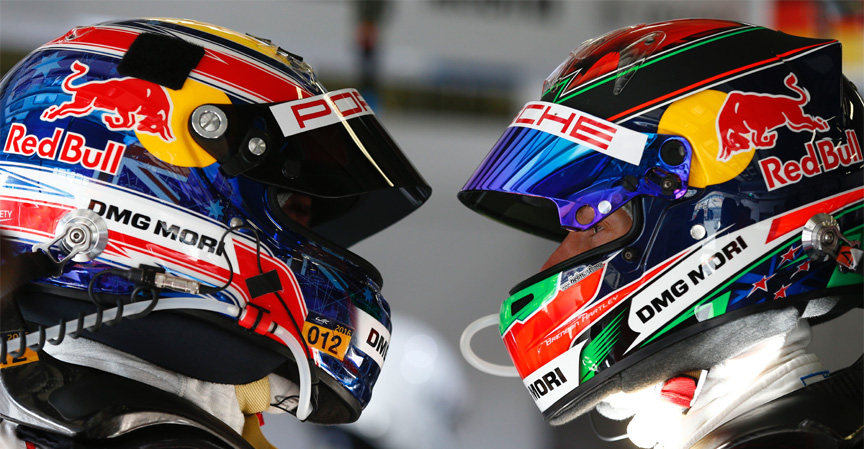
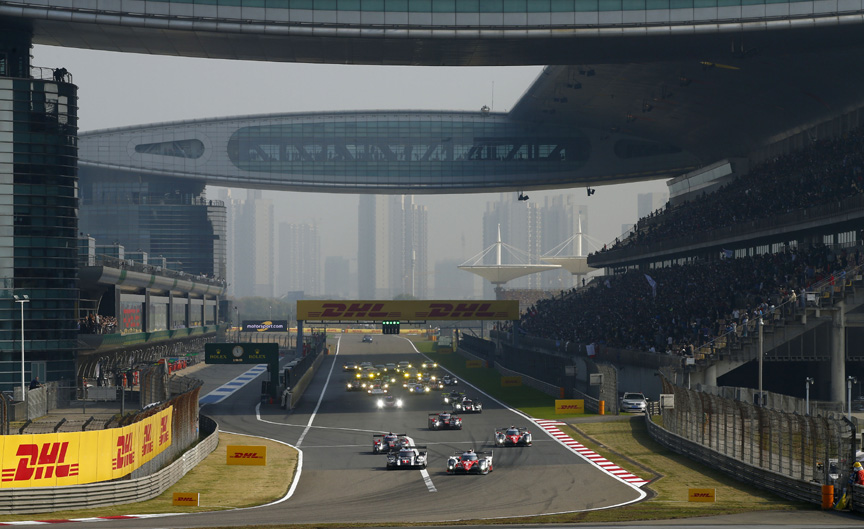
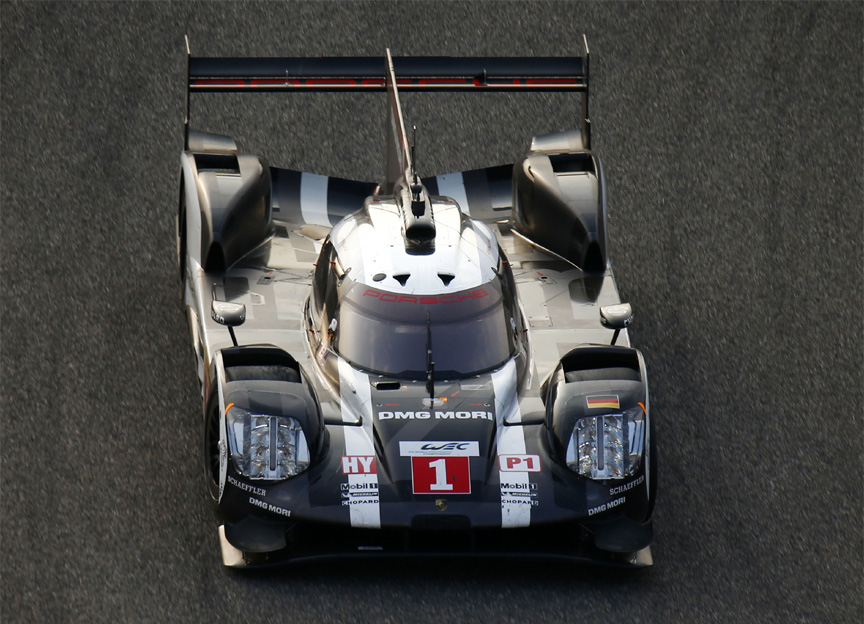
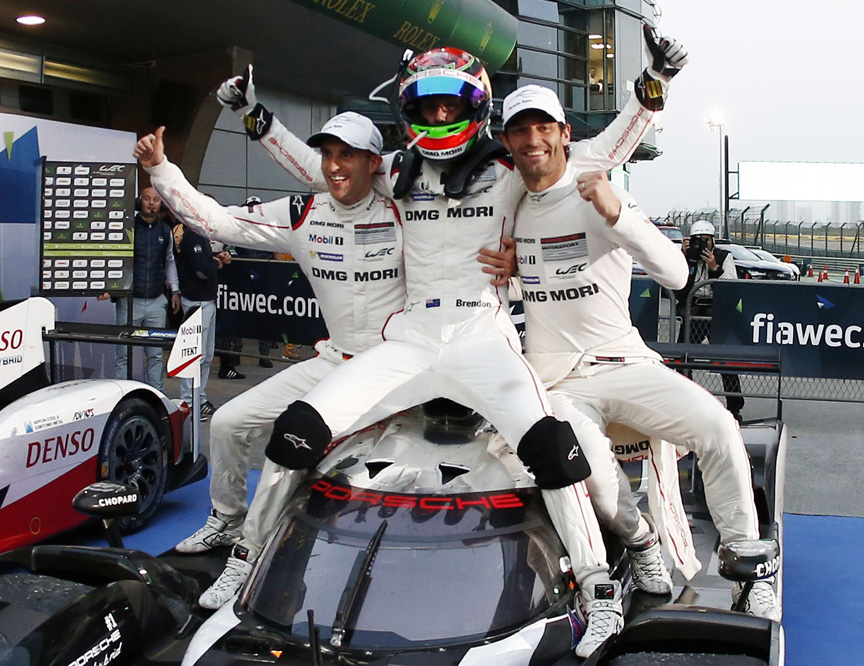
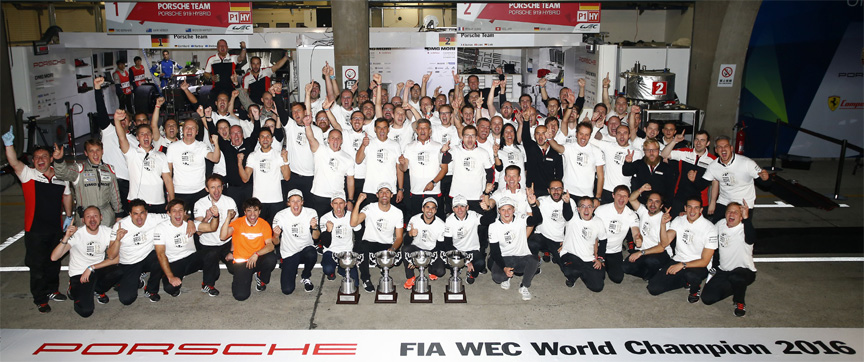
2016 Bahrain 6h: 3rd Place
Before the final race of the season, Porsche drivers Lieb/Jani/Dumas were leading the Drivers’ Championship and Toyota drivers Kobayashi/Conway/Sarrasin were on the second place. They had the theorethical chance to beat the Porsche drivers, but the last race was won by Audis. Although Romain Dumas, Neel Jani and Marc Lieb finished the last race in 6th position, they won the Drivers’ championship.
Race result 6 Hours of Bahrain 2016:
- Audi R18, Di Grassi/Duval/Jarvis 201 laps
- Audi R18, Lottere/Fässler/Tréluyer 201 laps
- Porsche 919 Hybrid, Bernhard/Webber/Hartley 201 laps
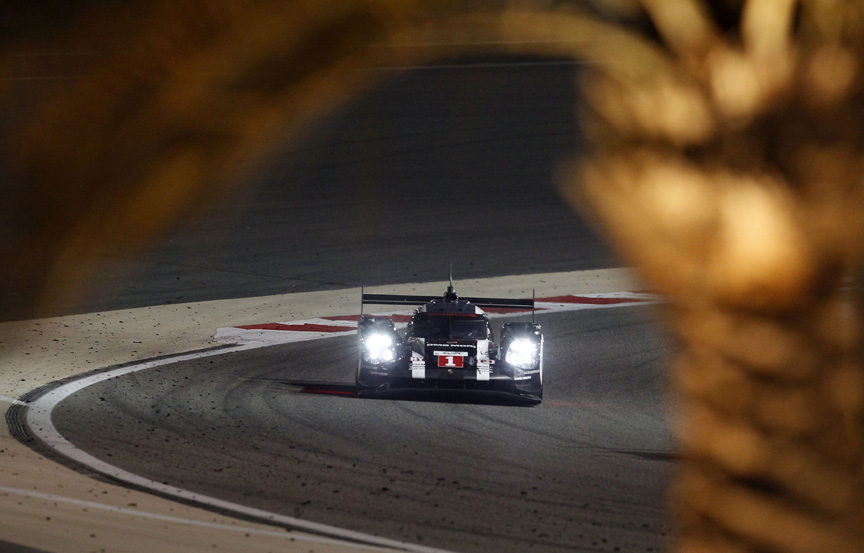
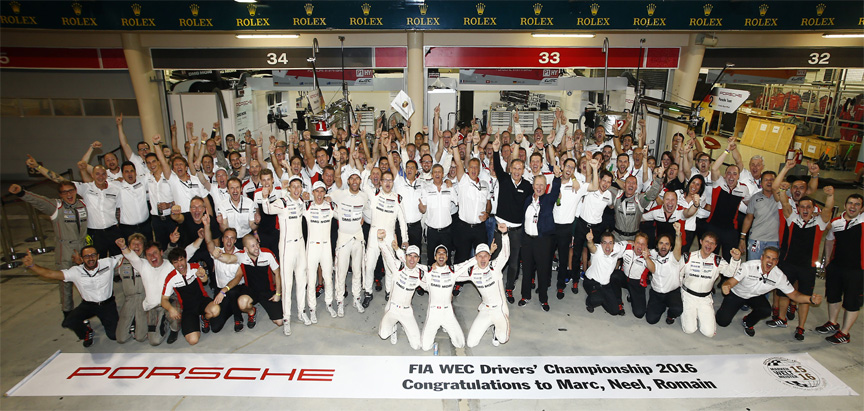
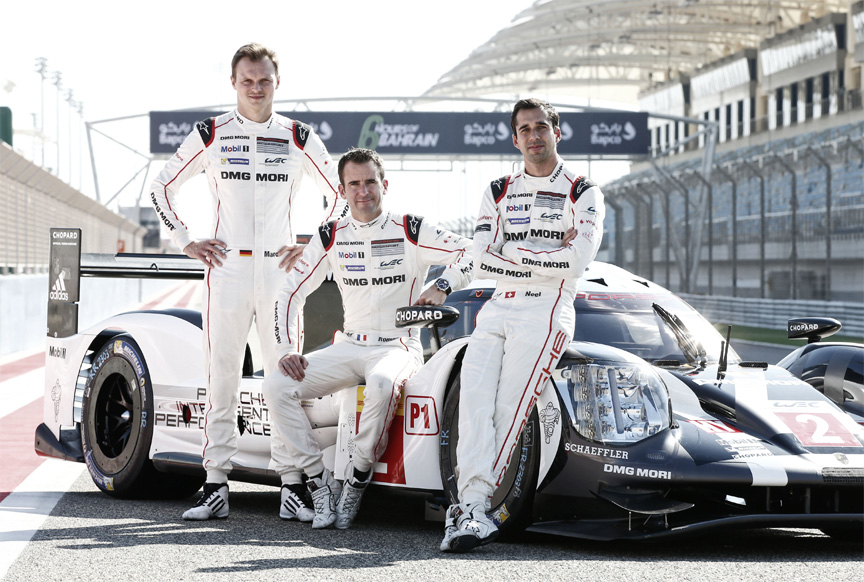
2016 Championship Results
Looking at the 2016 season points, Porsche gave some away compared to the previous year, Audi stayed on the same level and Toyota improved a lot, but had no chance to close the gap behind the Germans.
| 2015 Manufacturers | Championship |
| 1. Porsche | 324 points (344 points in 2015) |
| 2. Audi | 266 points (264 points in 2015) |
| 3. Toyota | 229 points (164 points in 2015) |
| 2015 Drivers Championship | |
| 1. Marc Lieb, Neel Jani, Romain Dumas (Porsche) | 160.0 points |
| 2. Loic Duval, Lucas di Grassi, Oliver Jarvis (Audi) | 147.5 points |
| 3. Stéphane Sarrazin, Mike Conway, Kamui Kobayashi (Toyota) | 145.0 points |


